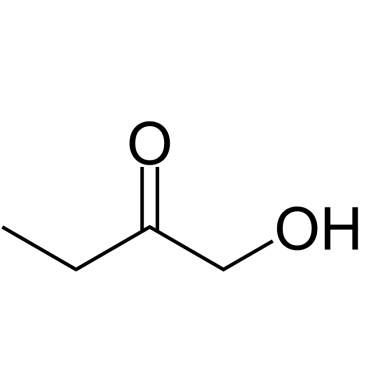Signaling Pathways
The antibody-drug conjugate (ADC), a humanized or human monoclonal antibody conjugated with highly cytotoxic small molecules (payloads) through chemical linkers, is a novel therapeutic format and has great potential to make a paradigm shift in cancer chemotherapy. The three components of the ADC together give rise to a powerful oncolytic agent capable of delivering normally intolerable cytotoxins directly to cancer cells, which then internalize and release the cell-destroying drugs. At present, two ADCs, Adcetris and Kadcyla, have received regulatory approval with >40 others in clinical development.
ADCs are administered intravenously in order to prevent the mAb from being destroyed by gastric acids and proteolytic enzymes. The mAb component of the ADC enables it to circulate in the bloodstream until it finds and binds to tumor-specific cell surface antigens present on target cancer cells. Linker chemistry is an important determinant of the safety, specificity, potency and activity of ADCs. Linkers are designed to be stable in the blood stream (to conform to the increased circulation time of mAbs) and labile at the cancer site to allow rapid release of the cytotoxic drug. First generation ADCs made use of early cytotoxins such as the anthracycline, doxorubicin or the anti-metabolite/antifolate agent, methotrexate. Current cytotoxins have far greater potency and can be divided into three main groups: auristatins, maytansines and calicheamicins.
The development of site-specific conjugation methodologies for constructing homogeneous ADCs is an especially promising path to improving ADC design, which will open the way for novel cancer therapeutics.
References:
[1] Tsuchikama K, et al. Protein Cell. 2016 Oct 14. DOI:10.1007/s13238-016-0323-0.
[2] Peters C, et al. Biosci Rep. 2015 Jun 12;35(4). pii: e00225. doi: 10.1042/BSR20150089.
Ziele für Signaling Pathways
- Proteases(29)
- Apoptosis(824)
- Chromatin/Epigenetics(15)
- Metabolism(336)
- MAPK Signaling(26)
- Tyrosine Kinase(73)
- DNA Damage/DNA Repair(49)
- PI3K/Akt/mTOR Signaling(38)
- Microbiology & Virology(42)
- Cell Cycle/Checkpoint(168)
- Ubiquitination/ Proteasome(24)
- JAK/STAT Signaling(10)
- TGF-β / Smad Signaling(21)
- Angiogenesis(59)
- GPCR/G protein(3)
- Stem Cell(19)
- Membrane Transporter/Ion Channel(161)
- Cancer Biology(366)
- Endocrinology and Hormones(152)
- Neuroscience(367)
- Obesity, Appetite Control & Diabetes(17)
- Peptide Inhibitors and Substrate(2)
- Other Signal Transduction(156)
- Immunology/Inflammation(934)
- Cardiovascular(98)
- Vitamin D Related(0)
- Antibody-drug Conjugate/ADC Related(0)
- PROTAC(212)
- Ox Stress Reagents(24)
- Others(4010)
- Antiparasitics(6)
- Toxins(62)
Produkte für Signaling Pathways
- Bestell-Nr. Artikelname Informationen
-
GC68476
(S)-Nicardipine
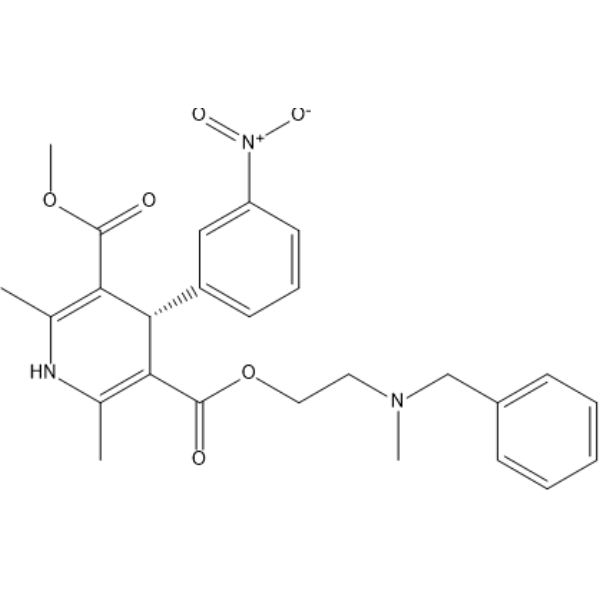
-
GC49179
(S)-O-Desmethyl Naproxen
A metabolite of (S)-naproxen

-
GC62450
(S)-PI3Kα-IN-4
(S)-PI3Kα-IN-4 ist ein potenter Inhibitor von PI3Kα mit einem IC50 von 2,3 nM. (S)-PI3Kα -IN-4 zeigt eine 38,3-, 4,25- und 4,93-fache SelektivitÄt fÜr PI3Kα Über PI3Kβ, PI3Kδ und PI3Kγ. (S)-PI3Kα-IN-4 kann fÜr die Krebsforschung verwendet werden.
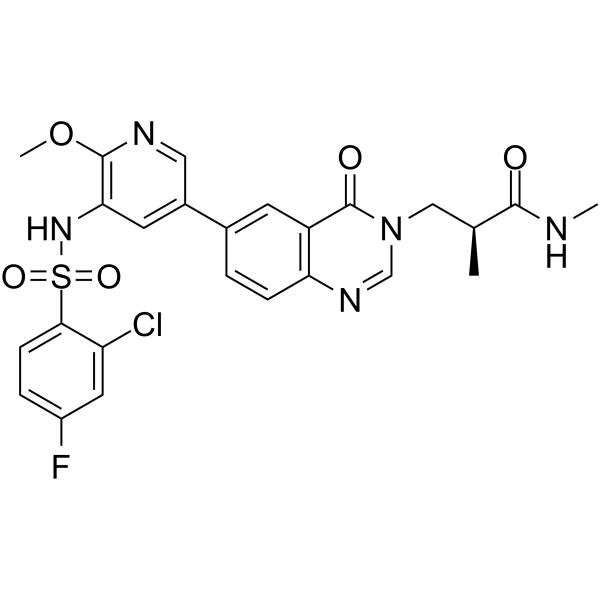
-
GC69941
(S)-Renzapride
(S)-Renzapride ((S)-BRL 24924) is the stereoisomer of Renzapride. Renzapride is a 5-HT4 receptor agonist with a Ki value of 115 nM. It is also an antagonist for 5HT2b and 5HT3 receptors. Renzapride can be used in research on constipation-predominant irritable bowel syndrome (C-IBS).
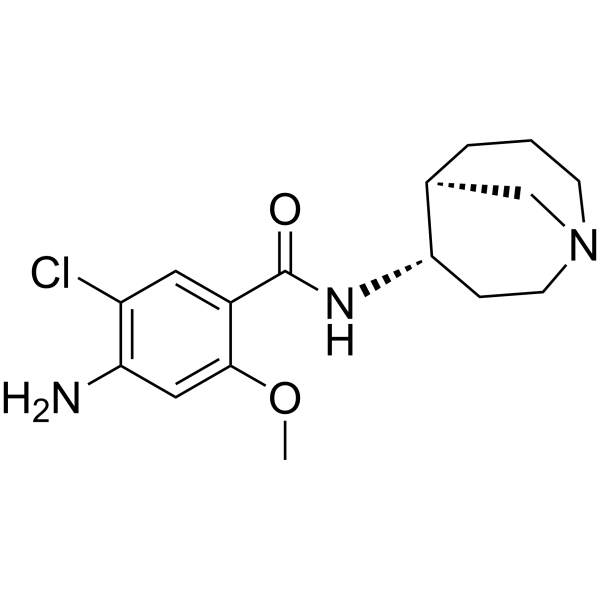
-
GC63797
(S)-Sunvozertinib
(S)-Sunvozertinib ((S)-DZD9008), das S-Enantiomer von Sunvozertinib, zeigt eine inhibitorische AktivitÄt gegen EGFR-Exon-20-NPH- und ASV-Insertionen, EGFR-L858R/T790M-Mutation und Her2-Exon20-YVMA-Insertion (IC50 = 51,2 nM, 51,9 nM). , 1 nM bzw. 21,2 nM). (S)-Sunvozertinib hemmt auch BTK.
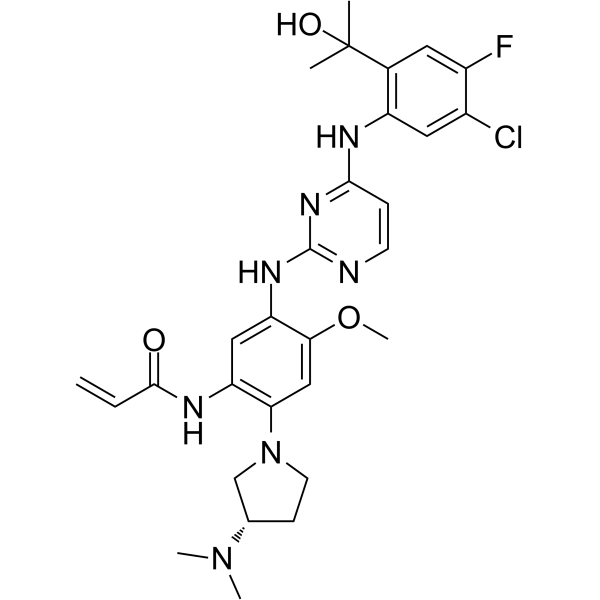
-
GC66064
(S)-Thalidomide
(S)-Thalidomid ((S)-(-)-Thalidomid) ist das S-Enantiomer von Thalidomid. (S)-Thalidomid hat immunmodulatorische, entzÜndungshemmende, antiangiogene und proapoptotische Wirkungen. (S)-Thalidomid induziert teratogene Wirkungen durch Bindung an Cereblon (CRBN).
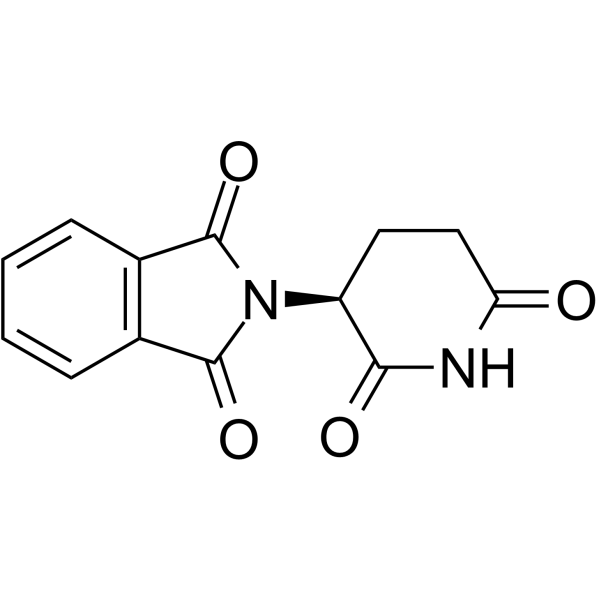
-
GC69977
(S)-Veliflapon
(S)-Veliflapon ((S)-BAY X 1005) ist ein oral aktiver Inhibitor der Leukotrien-Biosynthese und des 5-Lipoxygenase-Aktivierungsproteins (FLAP). (S)-Veliflapon hemmt die Bildung von Leukotrien B4 (LTB4) in Ratten, Mäusen und menschlichen weißen Blutkörperchen mit IC50-Werten von jeweils 0,026 µM, 0,039 µM und 0,22 µM. (S)-Veliflapon zeigt enantioselektive Aktivität in humanem Vollblut.
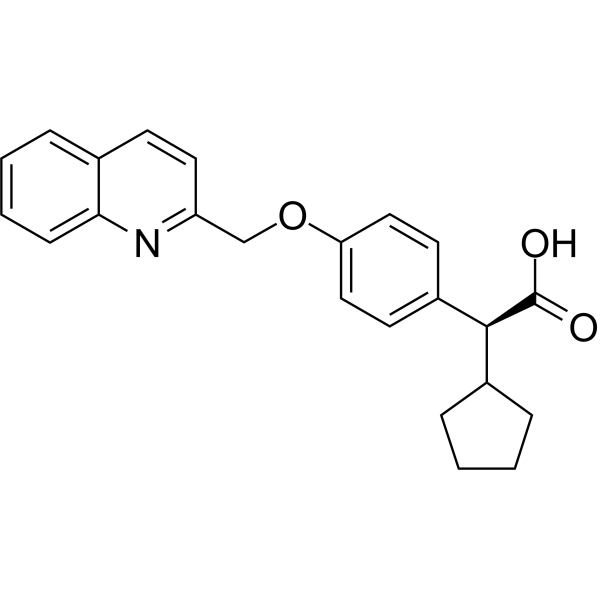
-
GC69979
(S)-VQW-765
(S)-VQW-765 ((S)-AQW-051) ist ein teilweise Agonist des α7-Nicotin-Acetylcholin-Rezeptors (nAChR), der eine orale Aktivität, Selektivität und Wirksamkeit aufweist. (S)-VQW-765 hat das Potenzial für Anwendungen bei kognitiven Beeinträchtigungen im Zusammenhang mit neurologischen Erkrankungen wie Alzheimer oder Schizophrenie.
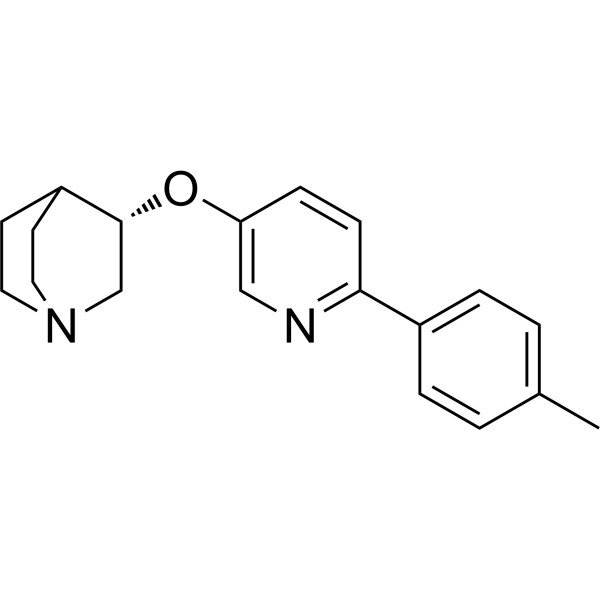
-
GC65883
(S,R)-WT IDH1 Inhibitor 2
(S,R)-WT IDH1 Inhibitor 2 (GSK321) ist ein potenter, selektiver mutierter IDH1-Inhibitor mit IC50-Werten von 2,9, 3,8, 4,6 und 46 nM fÜr R132G, R132C, R132H bzw. WT IDH1 und >100-fach SelektivitÄt gegenÜber IDH2. (S,R)-WT IDH1 Inhibitor 2 induziert eine Abnahme des intrazellulÄren 2-HG, eine Aufhebung der myeloischen Differenzierungsblockade und eine Induktion der granulozytÄren Differenzierung auf der Ebene von LeukÄmieblasten und unreiferen stammÄhnlichen Zellen. (S,R)-WT IDH1 Inhibitor 2 kann fÜr die Erforschung der akuten myeloischen LeukÄmie (AML) und anderer Krebsarten verwendet werden.
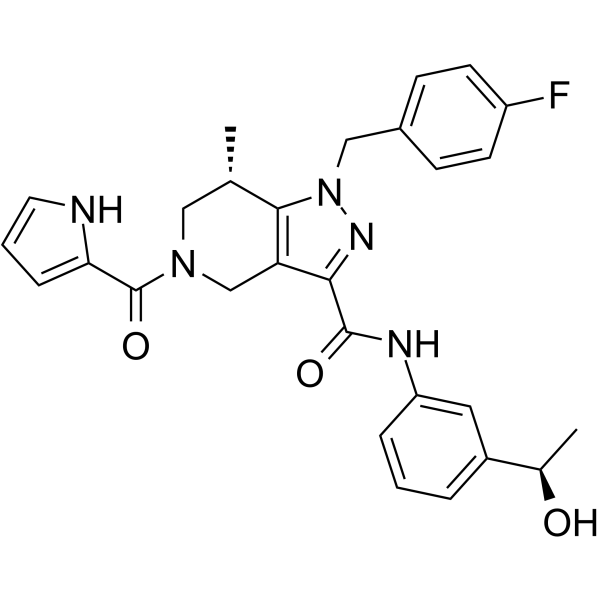
-
GC62283
(S,R,S)-AHPC
(S,R,S)-AHPC (VH032-NH2) ist der VH032-basierte VHL-Ligand, der bei der Rekrutierung des von Hippel-Lindau (VHL)-Proteins verwendet wird. (S,R,S)-AHPC kann mit dem Liganden fÜr Protein (z. B. BCR-ABL1) durch einen Linker verbunden werden, um PROTACs (z. B. GMB-475) zu bilden. GMB-475 induziert den Abbau von BCR-ABL1 mit einem IC50 von 1,11 μM in Ba/F3-Zellen.
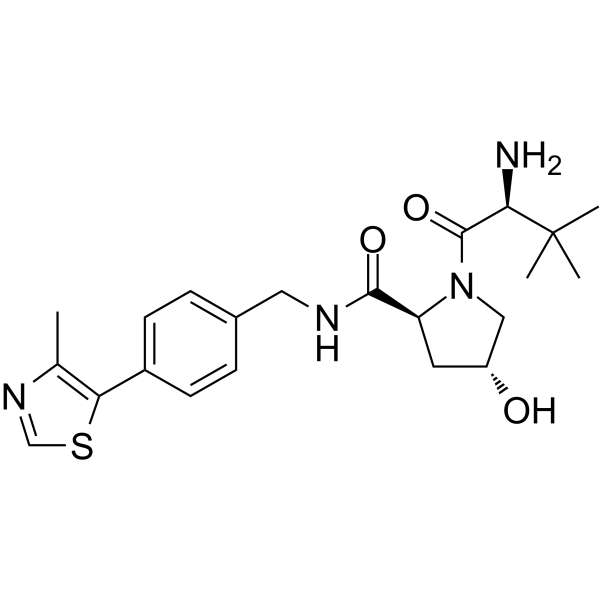
-
GC69944
(S,R,S)-AHPC-3-methylbutanyl acetate-methanesulfonothioate-Me-C10-NH2 TFA
(S,R,S)-AHPC-3-methylbutanylacetat-Methansulfonothioat-Me-C10-NH2 TFA ist ein synthetisches E3-Liganden-Linker-Konjugat mit dem Liganden (S,R,S)-AHPC und kann für PROTAC-Forschung verwendet werden.
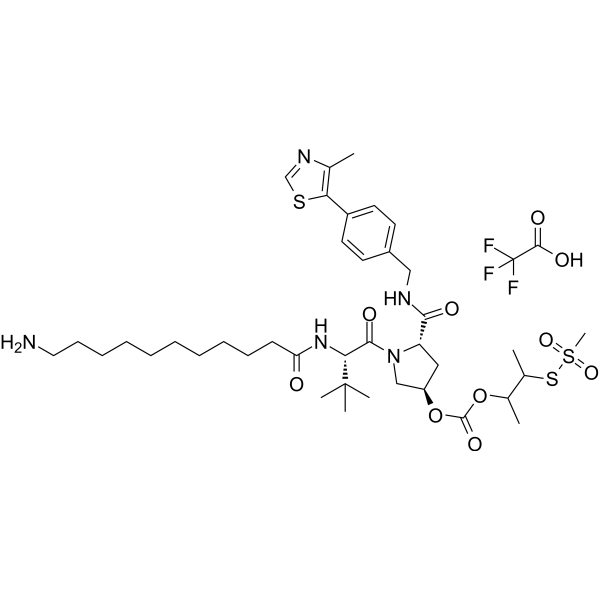
-
GC69945
(S,R,S)-AHPC-3-methylbutanyl acetate-methanesulfonothioate-PEG3-NH2 TFA
(S,R,S)-AHPC-3-methylbutanylacetat-Methansulfonothioat-PEG3-NH2 TFA ist ein synthetisches E3-Liganden-Linker-Konjugat, das einen Liganden basierend auf (S,R,S)-AHPC und drei Einheiten PEG-Linker enthält.
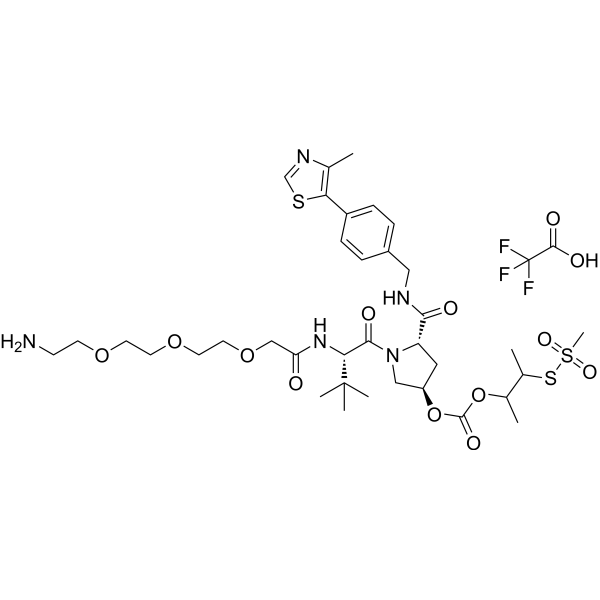
-
GC62148
(S,R,S)-AHPC-amido-C5-acid
(S,R,S)-AHPC-Amido-C5-SÄure enthÄlt einen VHL-Liganden fÜr die E3-Ubiquitin-Ligase und einen PROTAC-Linker. (S,R,S)-AHPC-Amido-C5-SÄure kann verwendet werden, um XY028-133 zu entwerfen.
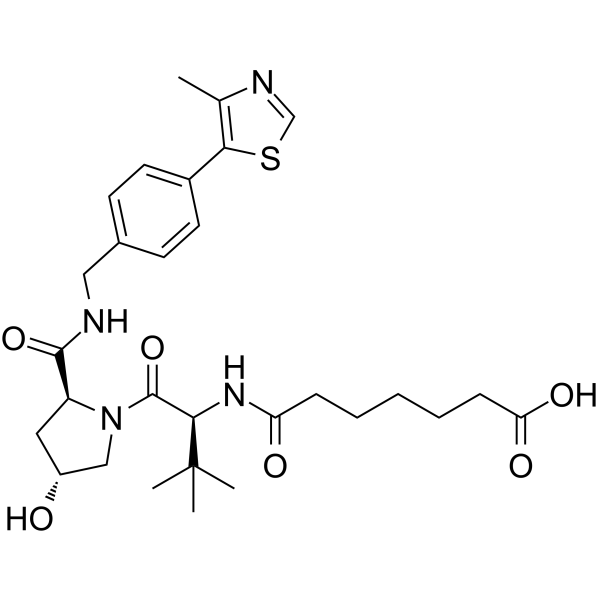
-
GC69946
(S,R,S)-AHPC-amido-C7-acid
(S,R,S)-AHPC-amido-C7-Säure enthält VHL-Liganden zur Rekrutierung von E3-Ubiquitin-Ligasen und PROTAC-Verbindungen. (S,R,S)-AHPC-amido-C5-Säure kann für die Gestaltung von PROTACs verwendet werden.
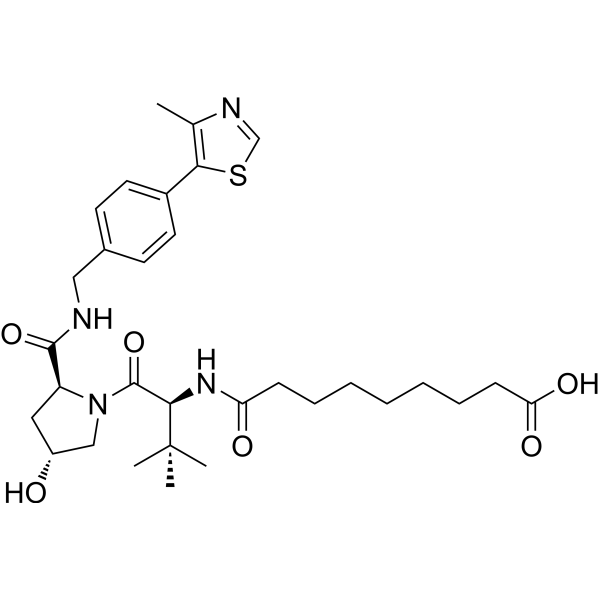
-
GC62684
(S,R,S)-AHPC-Boc-trans-3-aminocyclobutanol-Pip-CH2COOH
(S,R,S)-AHPC-Boc-trans-3-aminocyclobutanol-Pip-CH2COOH (VH032-Boc-trans-3-aminocyclobutanol-Pip-CH2COOH) ist ein E3-Ligase-Ligand-Linker-Konjugat, das an einem Ende a enthÄlt VHL-Ligand. (S,R,S)-AHPC-Boc-trans-3-aminocyclobutanol-Pip-CH2COOH wird in der PROTAC-Technologie verwendet.
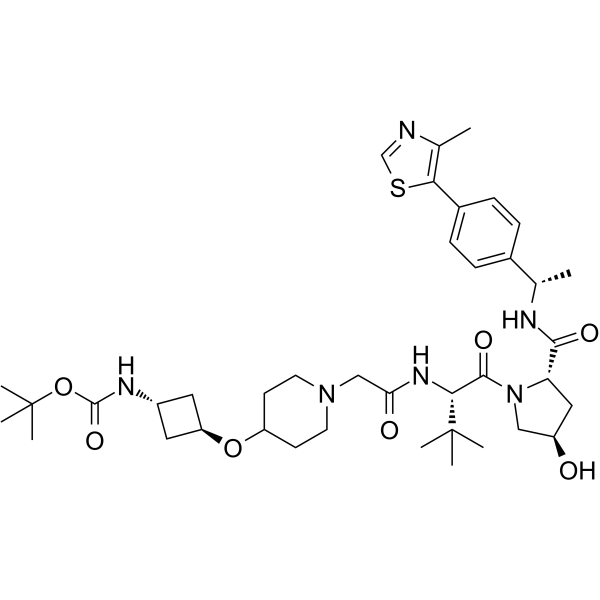
-
GC69947
(S,R,S)-AHPC-C10-NHBoc
(S,R,S)-AHPC-C10-NHBoc ist ein synthetischer E3-Verbindungsenzym-Liganden-Linker-Konjugat, das den VHL-Liganden auf Basis von (S,R,S)-AHPC und einen Verbindungsrest enthält. Es kann zur Synthese von gezielten PROTACs für BET verwendet werden.
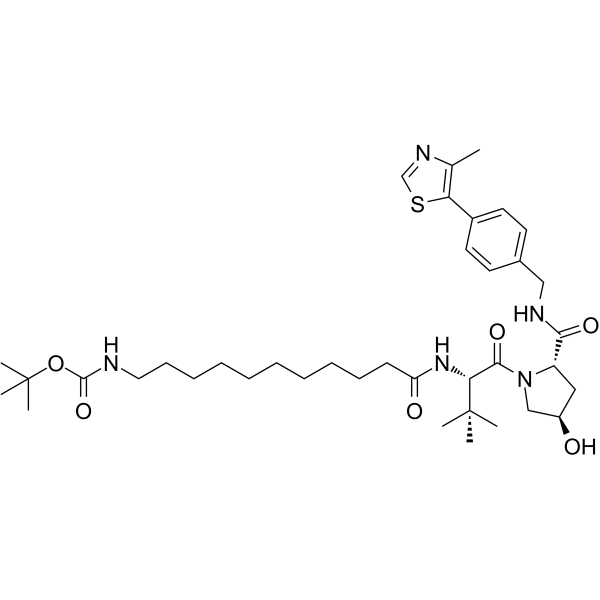
-
GC68352
(S,R,S)-AHPC-C2-amide-benzofuranylmethyl-pyridine
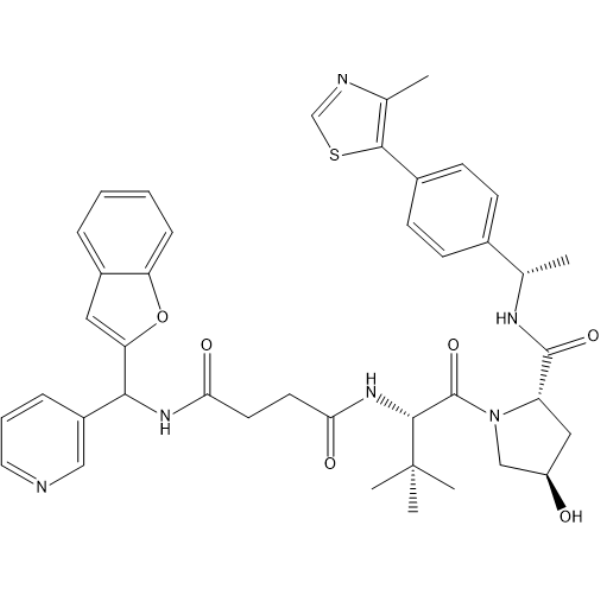
-
GC69743
(S,R,S)-AHPC-C4-NH2 hydrochloride
(S,R,S)-AHPC-C4-NH2 Hydrochlorid ist ein synthetischer E3 Liganden-Linker-Konjugat, das den VHL-Liganden basierend auf (S,R,S)-AHPC und einen Linker enthält. Es wird zur Synthese von gezielten PROTACs für EED verwendet.
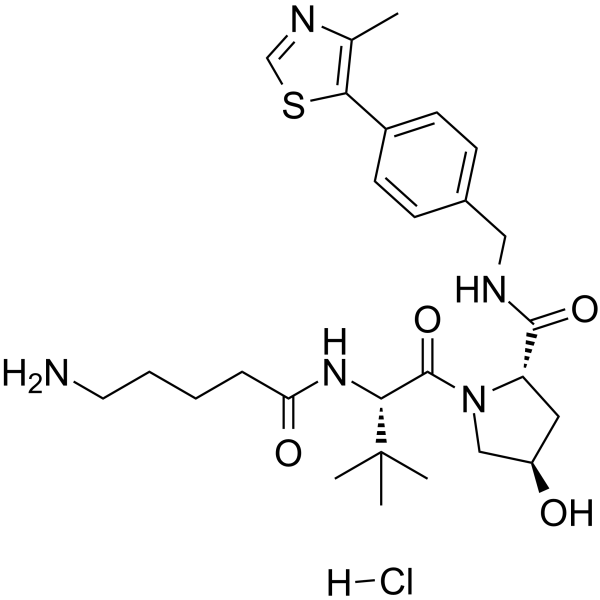
-
GC65133
(S,R,S)-AHPC-C5-COOH
(S,R,S)-AHPC-C5-COOH (VH032-C5-COOH) ist ein synthetisiertes E3-Ligase-Ligand-Linker-Konjugat, das den VH032-VHL-basierten Liganden und einen Linker zur Bildung von PROTACs enthÄlt. VH-032 ist ein selektiver und potenter Inhibitor der VHL/HIF-1α-Wechselwirkung mit einem Kd von 185 nM und hat das Potenzial fÜr die Untersuchung von AnÄmie und ischÄmischen Erkrankungen.
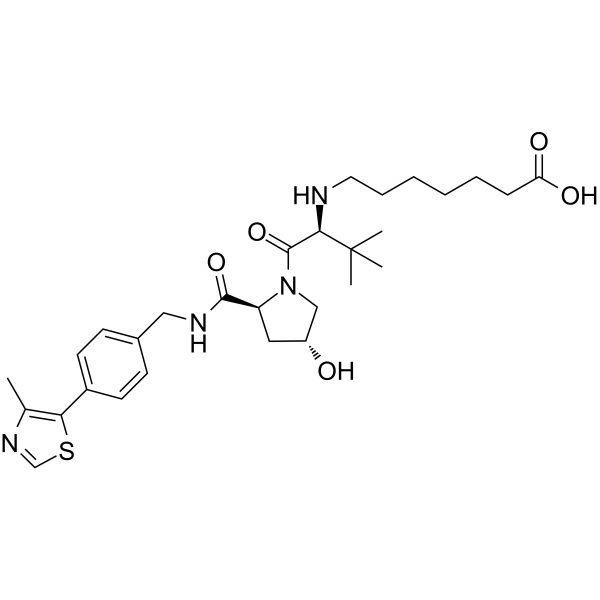
-
GC69948
(S,R,S)-AHPC-CO-C9-acid
(S,R,S)-AHPC-CO-C9-Säure ist ein Ligand-Linker-Komplex für E3-Ligasen, der an Liganden von Proteinen binden kann, um PROTACs zu bilden.
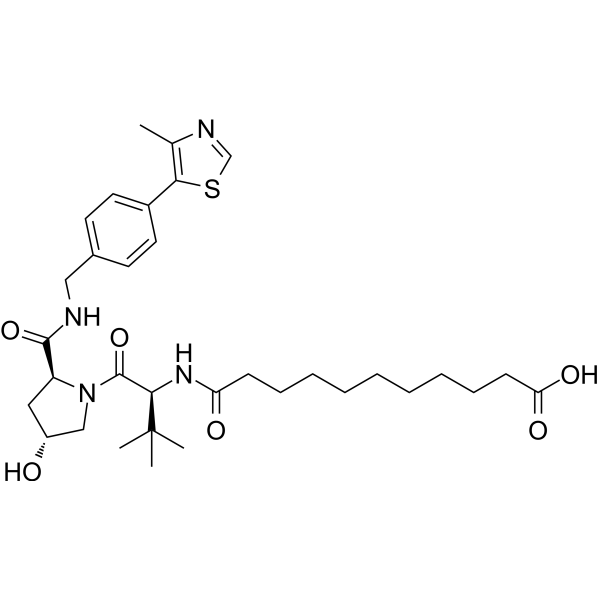
-
GC69949
(S,R,S)-AHPC-isobutyl acetate-methanesulfonothioate-Me-C10-NH2 TFA
(S,R,S)-AHPC-isobutylacetat-methansulfonothioat-Me-C10-NH2 TFA ist Teil des PROTAC BRD4 Degrader-12.
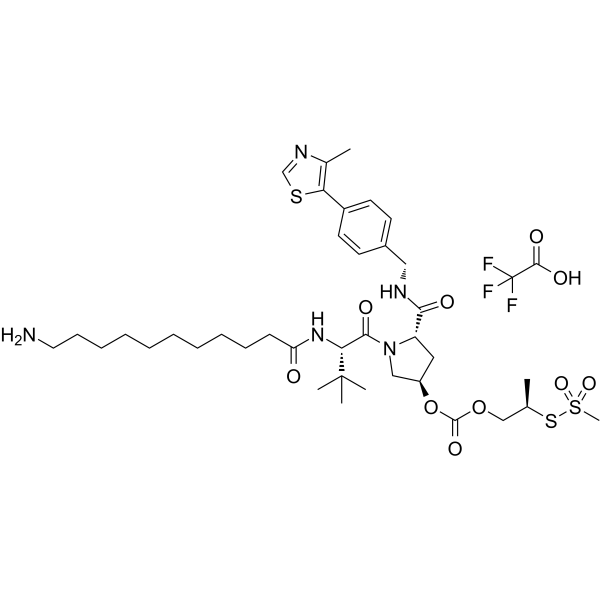
-
GC67831
(S,R,S)-AHPC-Me-C10-Br
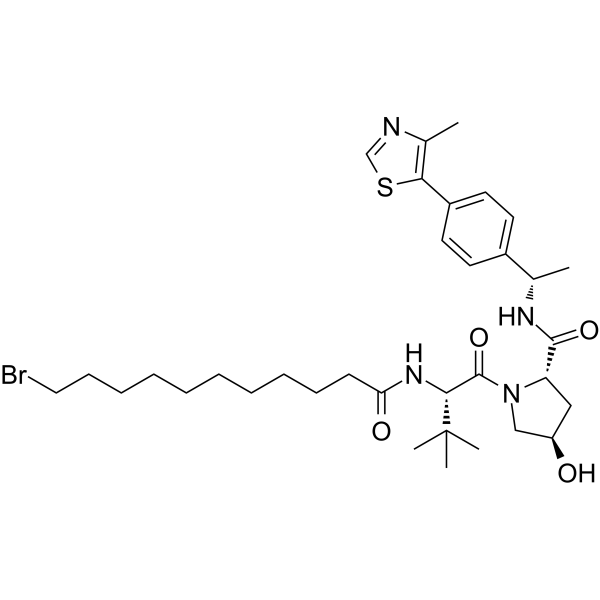
-
GC64371
(S,R,S)-AHPC-Me-C10-NH2
(S,R,S)-AHPC-Me-C10-NH2 ist ein synthetisiertes E3-Ligase-Ligand-Linker-Konjugat, das einen VHL-Liganden und einen Linker enthÄlt. (S,R,S)-AHPC-Me-C10-NH2 kann in PROTAC MS432 verwendet werden.
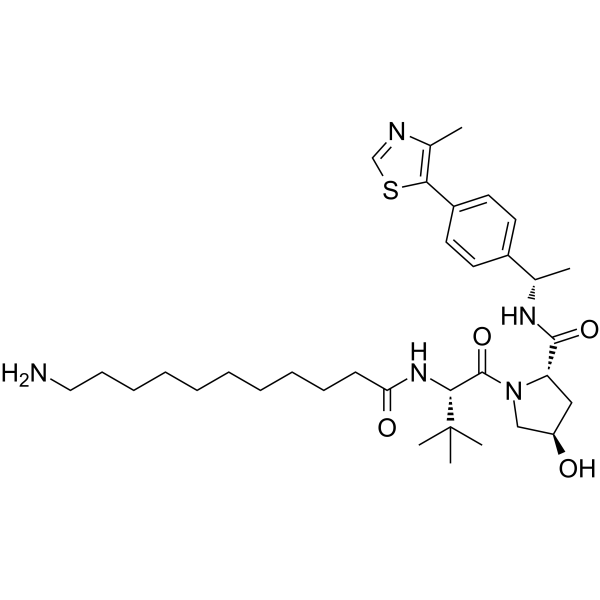
-
GC63494
(S,R,S)-AHPC-Me-C5-COOH
(S,R,S)-AHPC-Me-C5-COOH ist ein synthetisiertes E3-Ligase-Ligand-Linker-Konjugat, das einen VHL-Liganden und einen Linker enthÄlt. (S,R,S)-AHPC-Me-C5-COOH kann in PROTAC DT2216 verwendet werden.
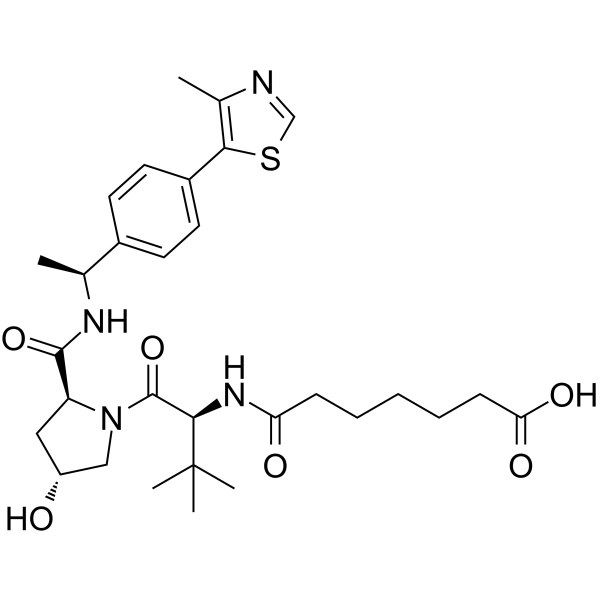
-
GC67729
(S,R,S)-AHPC-Me-C6-NH2
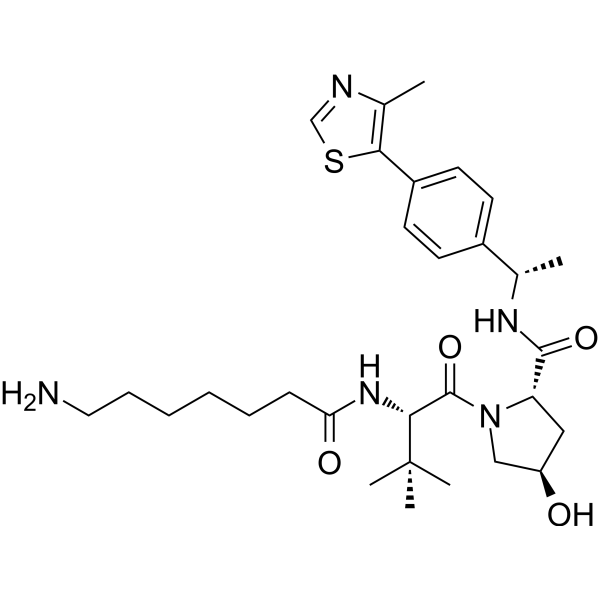
-
GC63561
(S,R,S)-AHPC-Me-C7 ester
(S,R,S)-AHPC-Me-C7-Ester ist ein E3-Ligase-Ligand-Linker-Konjugat, das zur Synthese von BCL-XL PROTAC-Abbaumitteln verwendet wird.
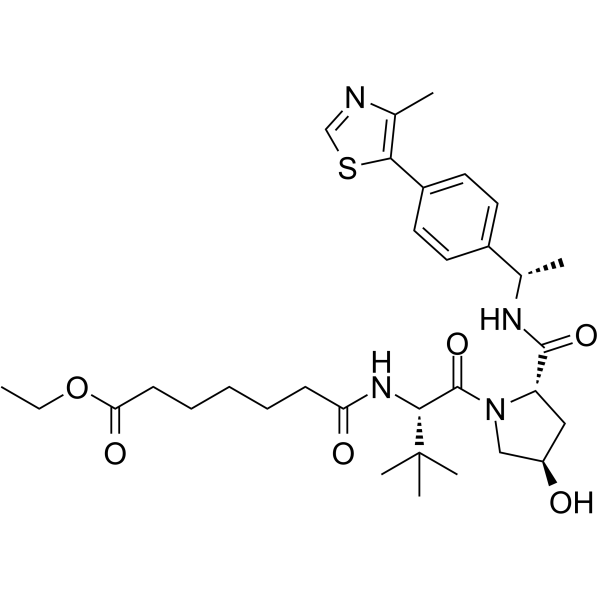
-
GC62585
(S,R,S)-AHPC-Me-CO-CH2-PEG3-NH2
(S,R,S)-AHPC-Me-CO-CH2-PEG3-NH2 ist ein synthetisiertes E3-Ligase-Ligand-Linker-Konjugat, das einen VHL-Liganden und einen Linker enthÄlt. (S,R,S)-AHPC-Me-CO-CH2-PEG3-NH2 kann in PROTAC BRD4 Degrader-5 und PROTAC BRD4 Degrader-5-CO-PEG3-N3 verwendet werden.
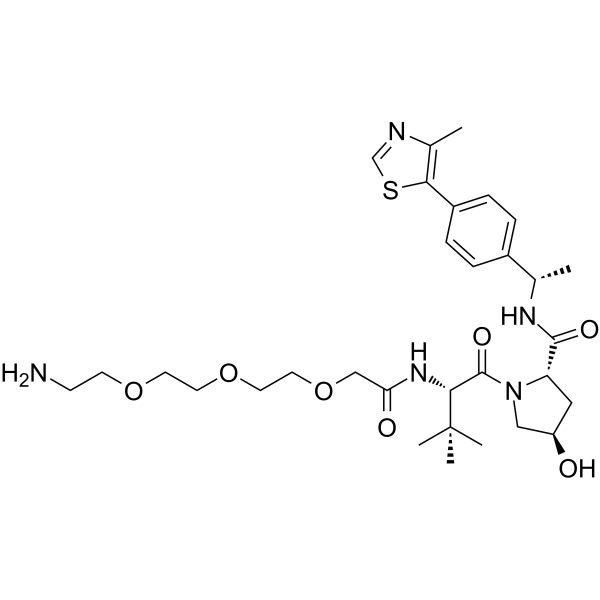
-
GC62183
(S,R,S)-AHPC-O-Ph-PEG1-NH2
(S,R,S)-AHPC-O-Ph-PEG1-NH2 (VH032-O-Ph-PEG1-NH2) ist ein E3-Ligase-Ligand-Linker-Konjugat und enthÄlt einen VHL-Liganden fÜr die E3-Ubiquitin-Ligase und einen PROTAC-Linker . (S,R,S)-AHPC-O-Ph-PEG1-NH2 wird in PROTAC EED Degrader-1 verwendet. PROTAC EED degrader-1 ist ein PROTAC, der auf EED mit einem pKD von 9,02 abzielt.
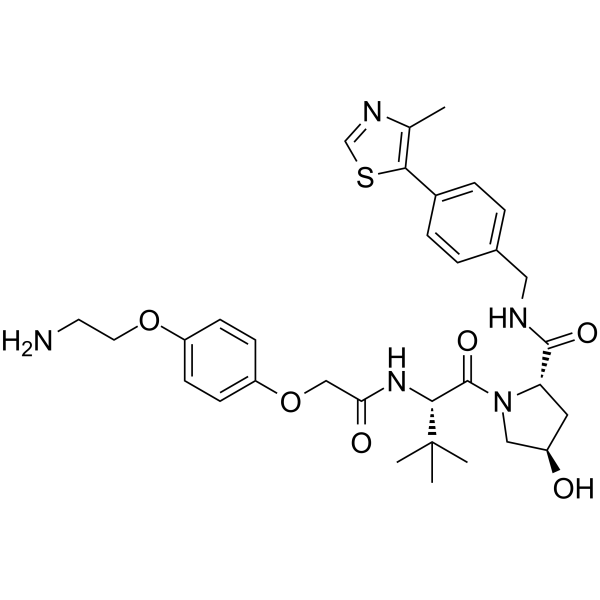
-
GC66630
(S,R,S)-AHPC-PEG2-acid
(S,R,S)-AHPC-PEG2-Säure ist ein PEG-basierter PROTAC-Linker, der bei der Synthese von PROTACs verwendet werden kann.
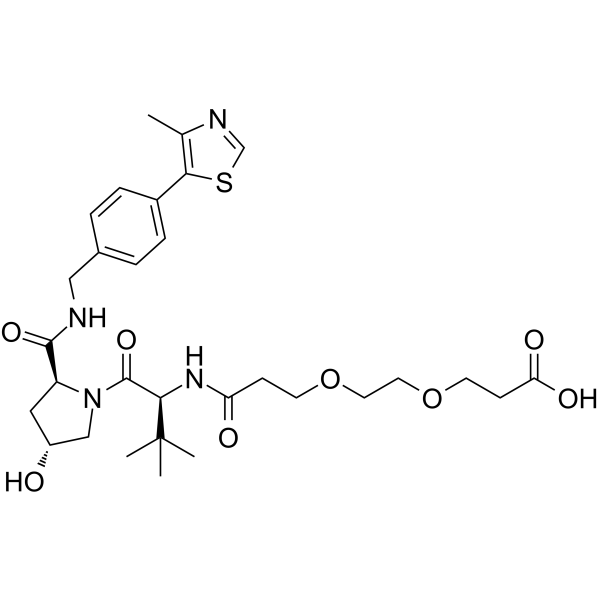
-
GC61774
(S,R,S)-AHPC-PEG5-Boc
(S,R,S)-AHPC-PEG5-Boc ist ein E3-Ligase-Ligand-Linker-Konjugat, das den (S,R,S)-AHPC-basierten VHL-Liganden und einen Linker enthÄlt, der fÜr den Cdc20-Degrader CP5V verwendet wird.
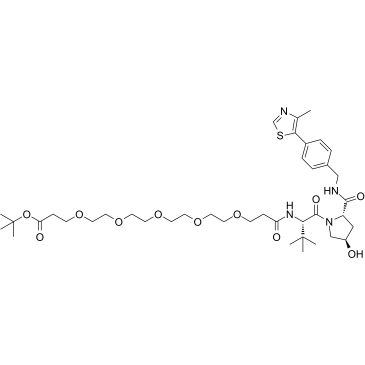
-
GC67672
(S,S)-GNE 5729
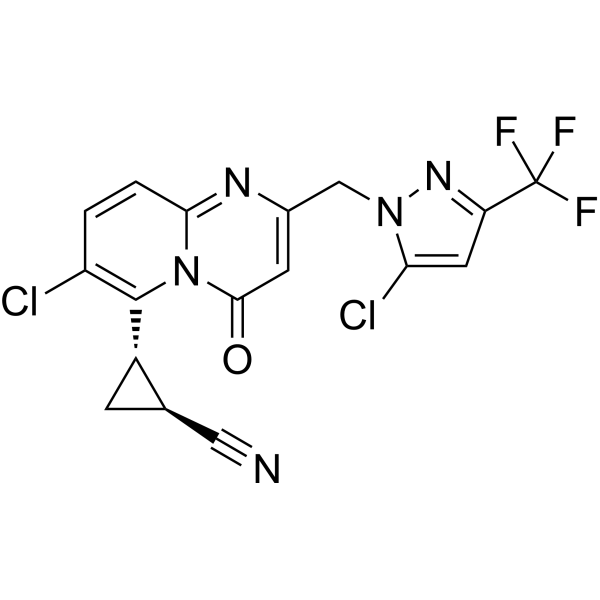
-
GC67682
(S,S)-GSK321
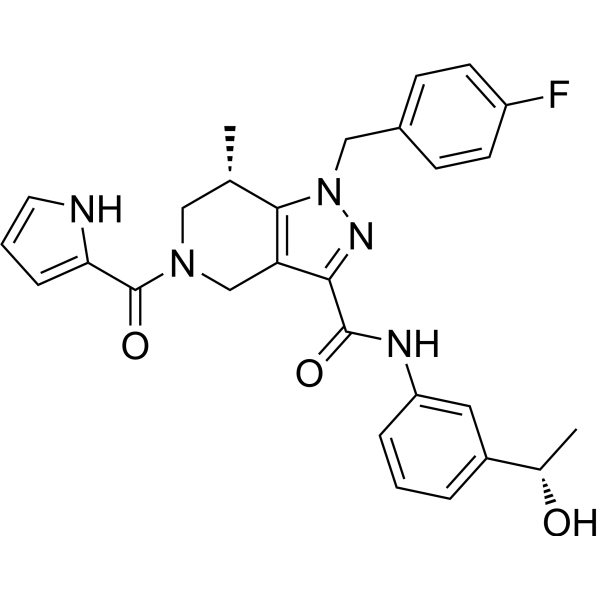
-
GC64535
(S,S)-TAPI-1
(S,S)-TAPI-1 ist ein Isomer von TAPI-1.
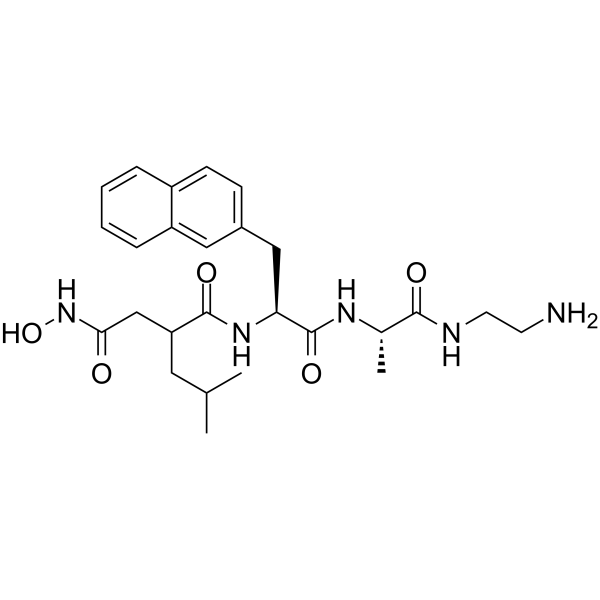
-
GC67761
(Z)-10-Hydroxynortriptyline-d3
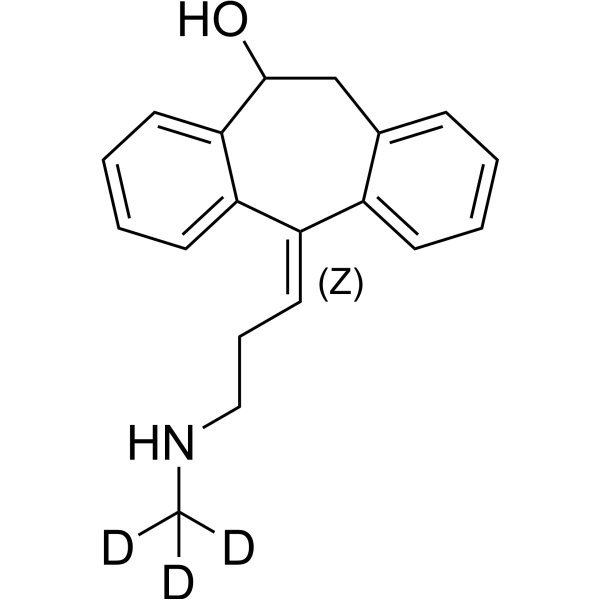
-
GC62291
(Z)-Orantinib
(Z)-Orantinib ((Z)-SU6668) ist ein potenter, selektiver, oral aktiver und ATP-kompetitiver Inhibitor von Flk-1/KDR, PDGFRβ und FGFR1 mit IC50-Werten von 2,1, 0,008 bzw. 1,2 μM. (Z)-Orantinib ist ein wirksames antiangiogenes und Antitumormittel, das die Regression etablierter Tumore induziert.
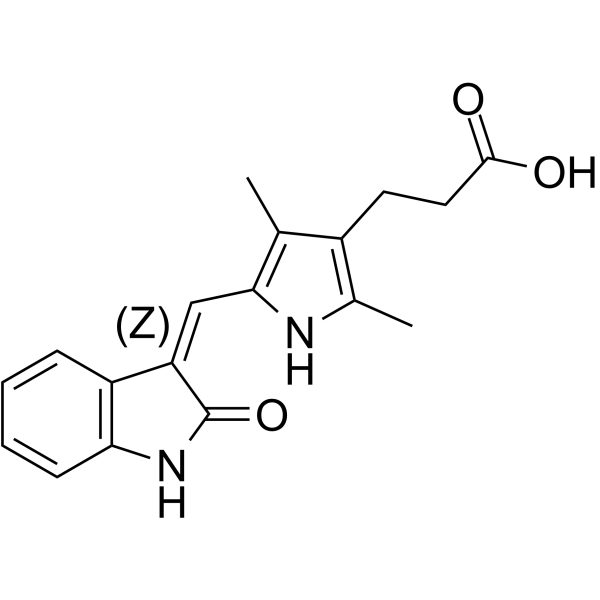
-
GC11965
(±)-Huperzine A
A neuroprotective AChE inhibitor
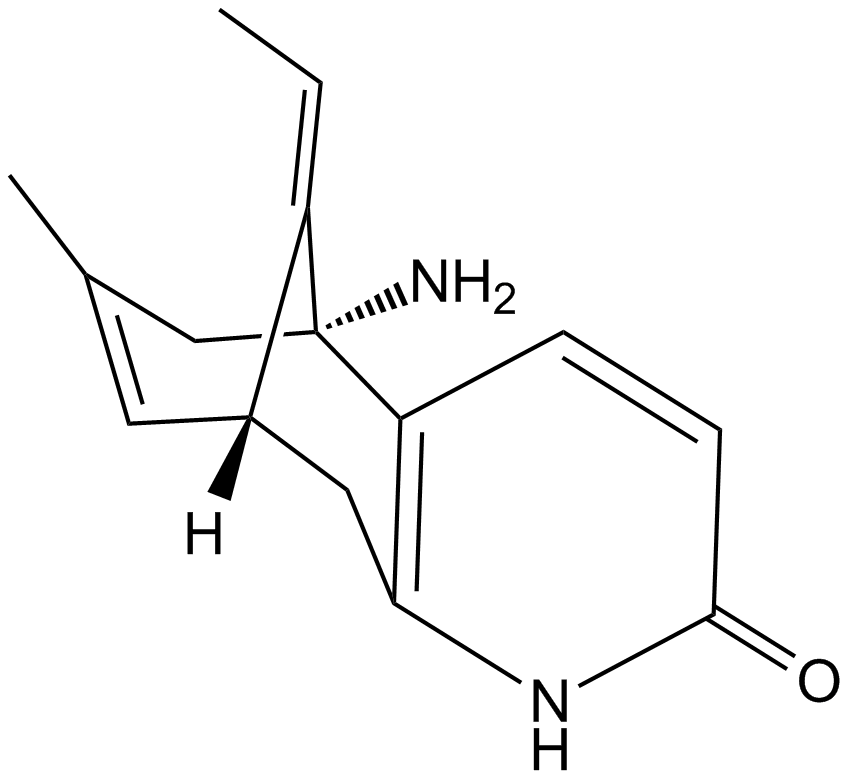
-
GC14252
(–)-Stepholidine
A dopamine receptor antagonist and 5-HT1A partial agonist
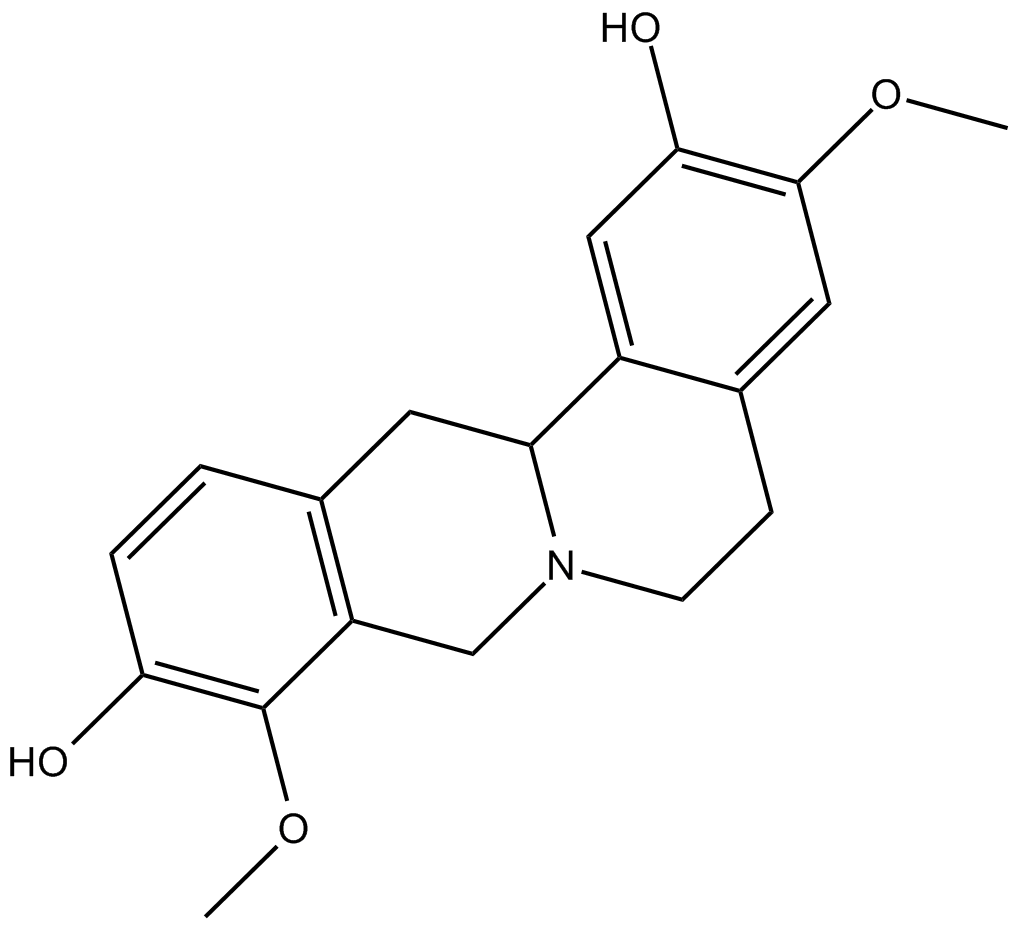
-
GC63946
0990CL
0990CL ist ein spezifischer heterotrimerer Inhibitor der Gαi-Untereinheit durch direkte Wechselwirkung mit Gαi.
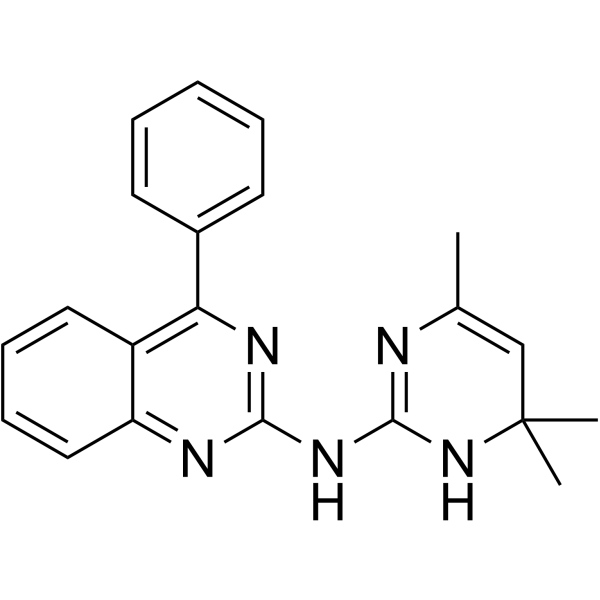
-
GC62761
1α-Hydroxy-3-epi-vitamin D3
1α-Hydroxy-3-epi-Vitamin D3, ein natÜrlicher Metabolit von 1alpha,25-Dihydroxyvitamin D3, ist ein starker UnterdrÜcker der Sekretion von Parathormon (PTH).
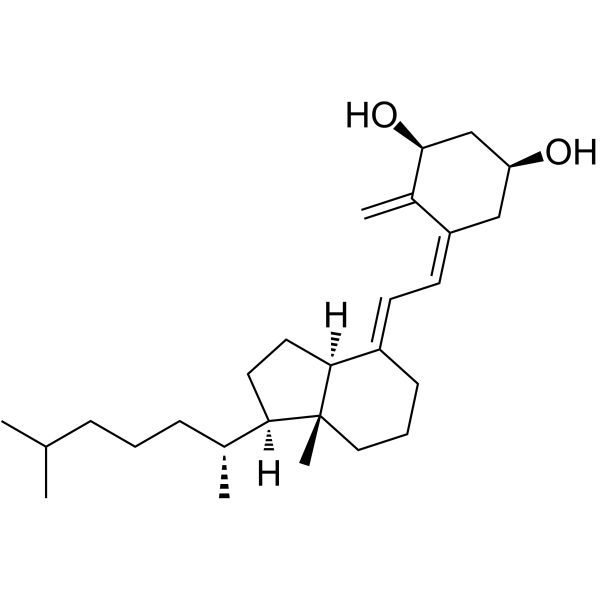
-
GC49034
1(R)-(Trifluoromethyl)oleyl alcohol
An oleic acid analog

-
GC65171
1,1′,1′′,1′′′-[1,4-Piperazinediylbis(2,1-ethanediylnitrilo)]tetrakis[2-dodecanol]
1,1′,1′′,1′′′-[1,4-Piperazinediylbis(2,1-ethanediylnitrilo)]tetrakis[2-dodecanol] is a lipid/lipidoid used in preparation of lipid-based or Lipoid-Nanopartikel.
![1,1′,1′′,1′′′-[1,4-Piperazinediylbis(2,1-ethanediylnitrilo)]tetrakis[2-dodecanol] Chemical Structure 1,1′,1′′,1′′′-[1,4-Piperazinediylbis(2,1-ethanediylnitrilo)]tetrakis[2-dodecanol] Chemical Structure](/media/struct/GC6/GC65171.png)
-
GC49768
1,1’-Ethylidene-bis-(L-tryptophan)
A potential impurity found in commercial preparations of L-tryptophan

-
GC65729
1,1,1-Trifluoroethyl-PEG2-azide
1,1,1-Trifluorethyl-PEG2-Azid ist ein PEG-basierter PROTAC-Linker, der bei der Synthese von PROTACs verwendet werden kann.
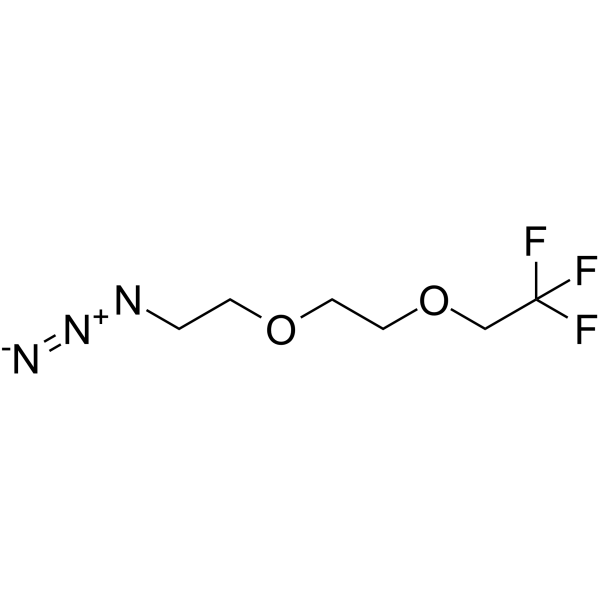
-
GC65715
1,1,1-Trifluoroethyl-PEG2-propargyl
1,1,1-Trifluorethyl-PEG2-propargyl ist ein PEG-basierter PROTAC-Linker, der bei der Synthese von PROTACs verwendet werden kann.
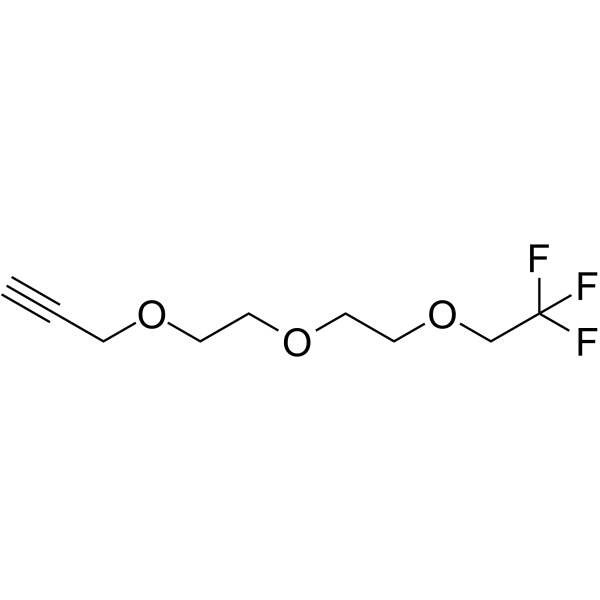
-
GC66567
1,1,1-Trifluoroethyl-PEG4-alcohol
1,1,1-Trifluorethyl-PEG4-Alkohol ist ein PEG-basierter PROTAC-Linker, der bei der Synthese von PROTACs verwendet werden kann.
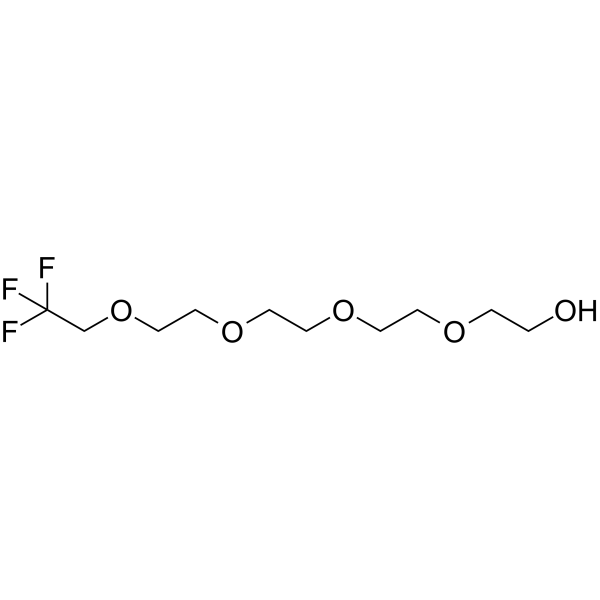
-
GC67011
1,1,1-Trifluoroethyl-PEG4-amine
111-Trifluorethyl-PEG4-Amin ist ein PEG-basierter PROTAC-Linker, der bei der Synthese von PROTACs verwendet werden kann.
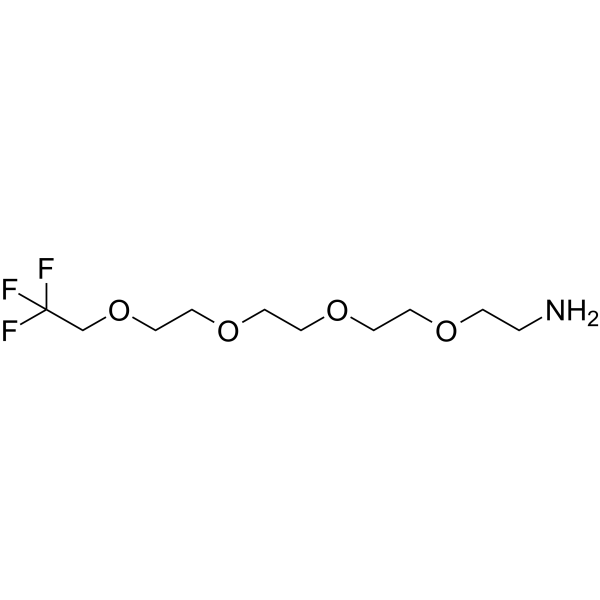
-
GC67295
1,1,1-Trifluoroethyl-PEG4-aminooxy
1,1,1-Trifluorethyl-PEG4-aminooxy ist ein PEG-basierter PROTAC-Linker, der bei der Synthese von PROTACs verwendet werden kann.
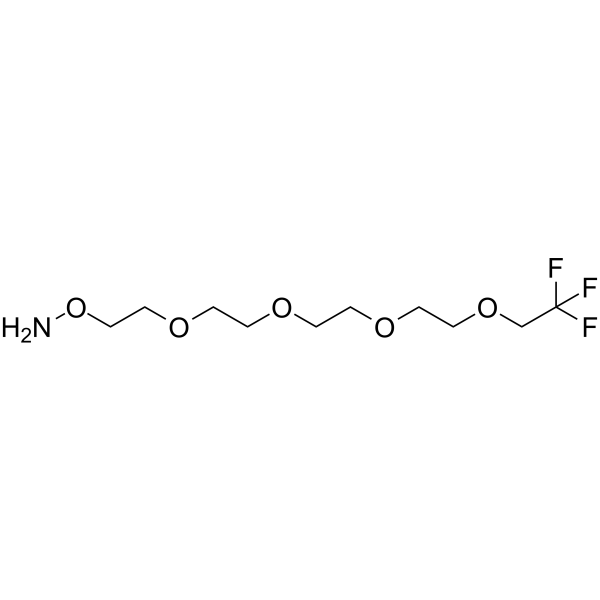
-
GC67595
1,1,1-Trifluoroethyl-PEG4-azide
111-Trifluorethyl-PEG4-Azid ist ein PEG-basierter PROTAC-Linker, der bei der Synthese von PROTACs verwendet werden kann.
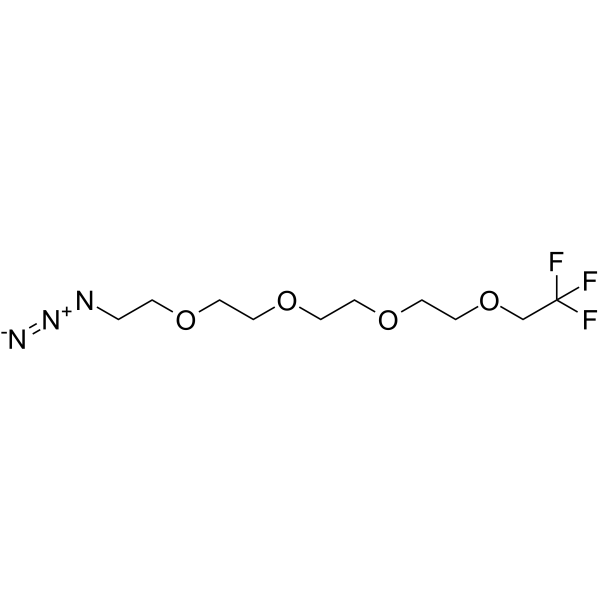
-
GC66971
1,1,1-Trifluoroethyl-PEG4-propargyl
1,1,1-Trifluorethyl-PEG4-Propargyl ist ein PEG-basierter PROTAC-Linker, der bei der Synthese von PROTACs verwendet werden kann.
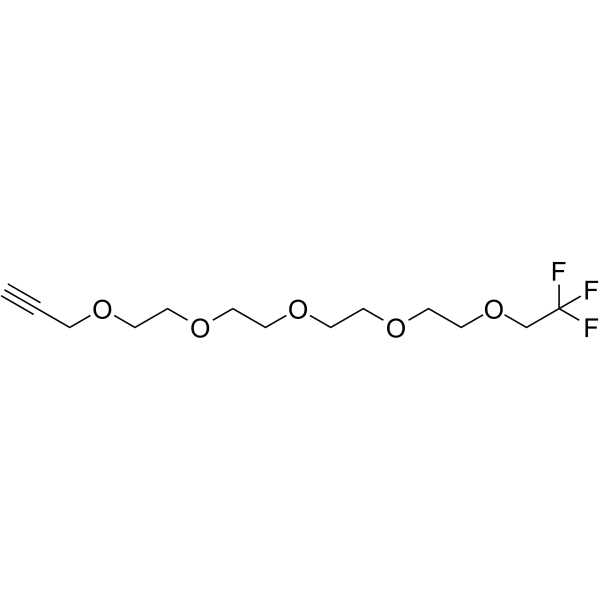
-
GC65718
1,1,1-Trifluoroethyl-PEG4-Tos
1,1,1-Trifluorethyl-PEG4-Tos ist ein PEG-basierter PROTAC-Linker, der bei der Synthese von PROTACs verwendet werden kann.
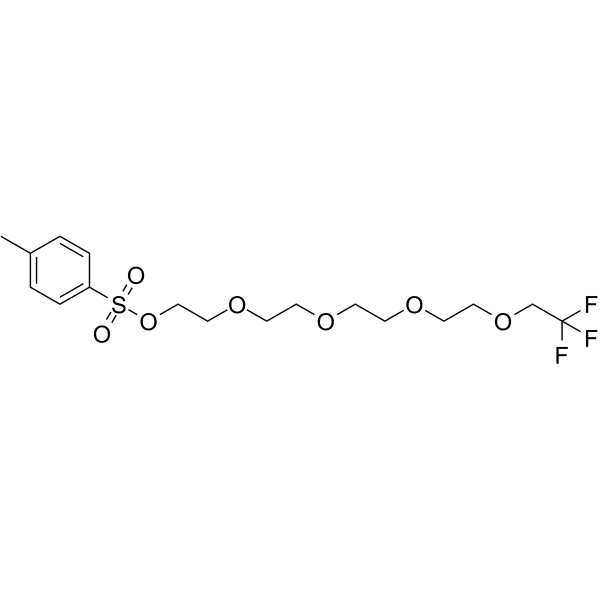
-
GC67833
1,1,3-Tribromoacetone

-
GC17055
1,2,3,4,5,6-Hexabromocyclohexane
1,2,3,4,5,6-六溴环己烷(1,2,3,4,5,6-Hexabromocyclohexane)直接抑制JAK2激酶结构域内的口袋,抑制自身磷酸化。
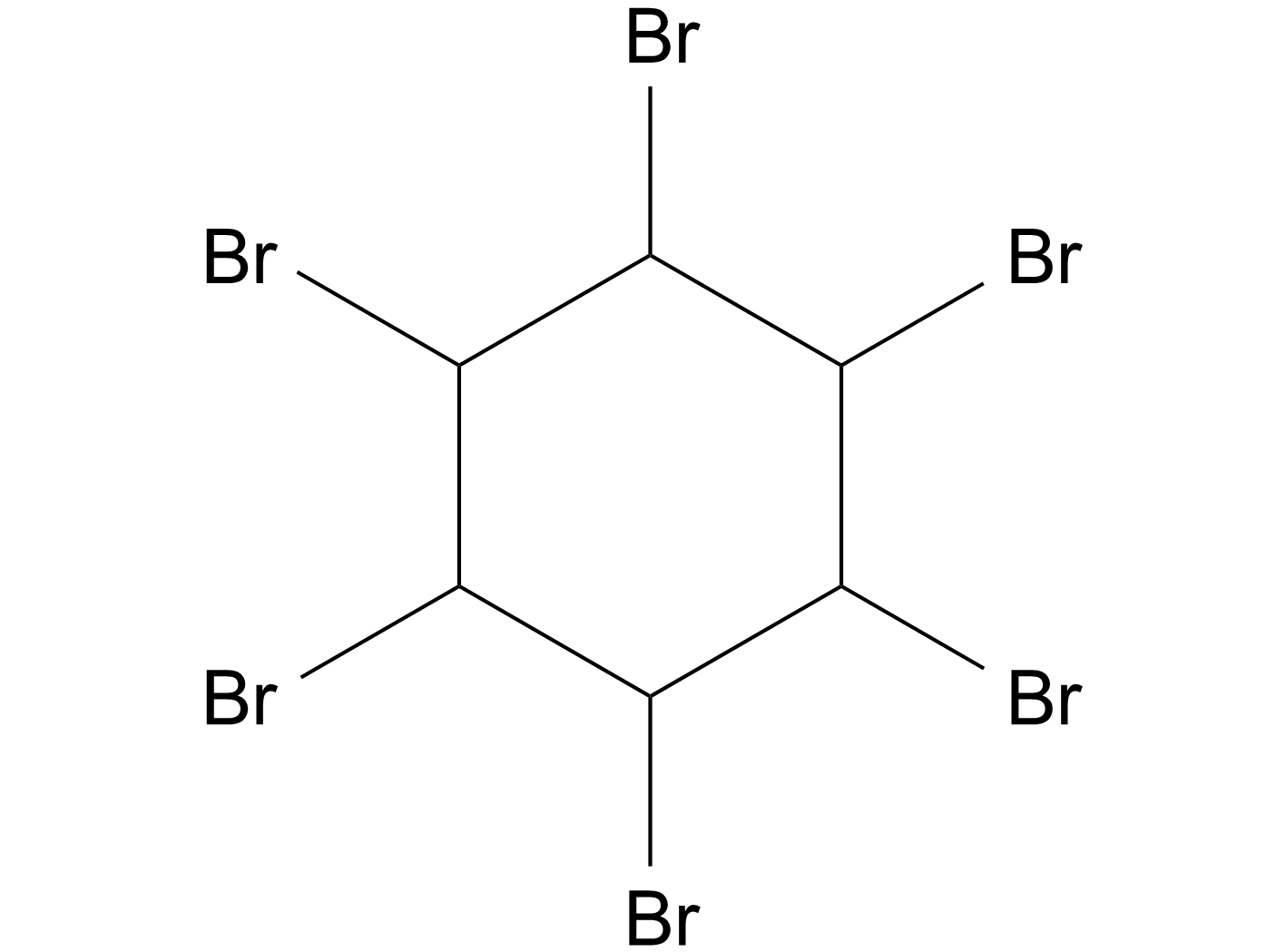
-
GC61719
1,2,3,4-Tetramethylbenzene
1,2,3,4-Tetramethylbenzol besteht aus einem Benzolring mit vier Methylgruppen (-CH3) als Substituent.
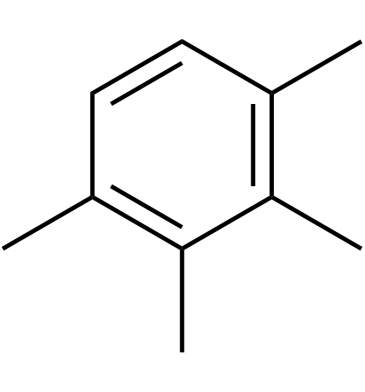
-
GC61729
1,2,3-Trimethoxybenzene
1,2,3-Trimethoxybenzol ist ein Mitglied der Klasse von Verbindungen, die als Anisole bekannt sind.
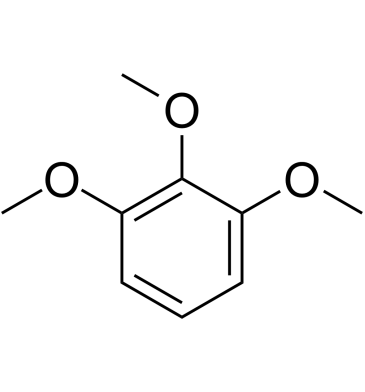
-
GC61898
1,2,4-Trihydroxybenzene
1,2,4-Trihydroxybenzol (Hydroxyhydrochinon), ein Nebenprodukt der KaffeebohnenrÖstung, erhÖht die intrazellulÄre Ca2+-Konzentration in Rattenthymus-Lymphozyten.
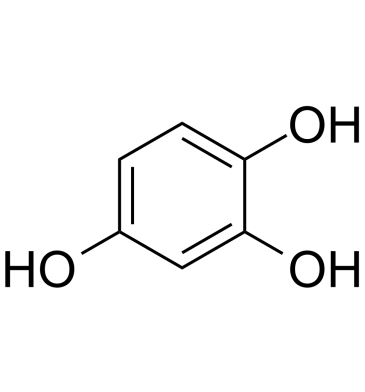
-
GC66452
1,2-Bis(3-(trifluoromethyl)phenyl)diselane
1,2-Bis(3-(trifluormethyl)phenyl)diselan ist ein Wirkstoff und kann fÜr die Forschung verwendet werden.
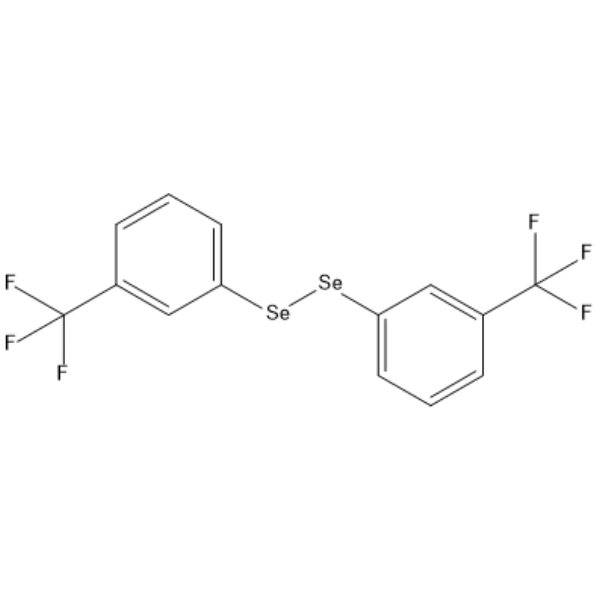
-
GC68484
1,2-O-Isopropylidene-5-O-p-toluoyl-a-D-xylofuranose
1,2-O-Isopropyliden-5-O-p-toluoyl-a-D-xylofuranose ist ein Analogon von Purinnukleosiden. Purinnukleosid-Analoga haben eine breite Palette an antitumoralen Aktivitäten und zielen auf maligne Lymphsystem-Tumoren ab. Der Mechanismus der Antikrebswirkung beruht dabei auf der Hemmung der DNA-Synthese, Induktion von Zellapoptose (Apoptose) usw.
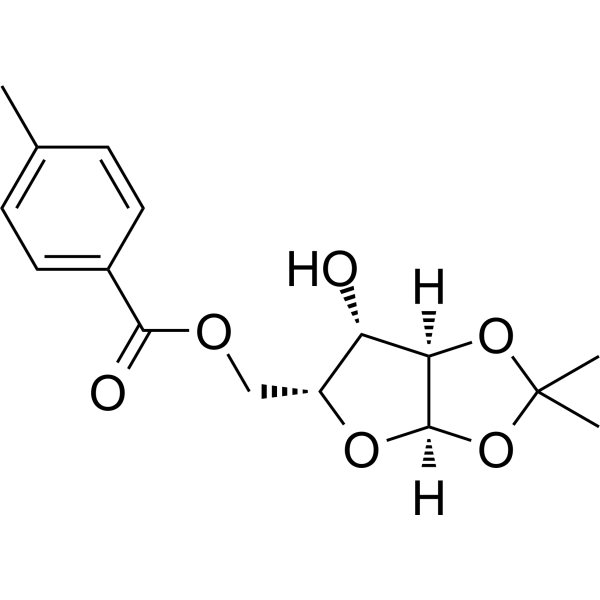
-
GC61731
1,3,5-Triisopropylbenzene
1,3,5-Triisopropylbenzol wirkt als Kraftstoff und Kraftstoffadditiv.
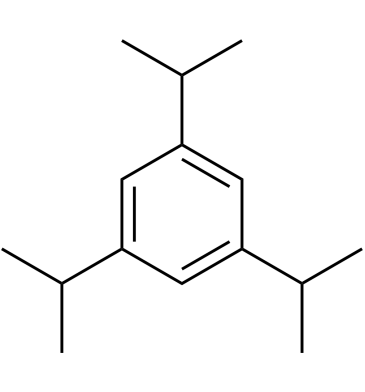
-
GC61399
1,3,6,8-Tetrahydroxynaphthalene
1,3,6,8-Tetrahydroxynaphthalin (T4HN) ist ein unverzichtbarer VorlÄufer von DHN (1,8-Dihydroxynaphthalin)-Melanin und eine einzigartige symmetrische Verbindung von Polyketid-Ursprung.
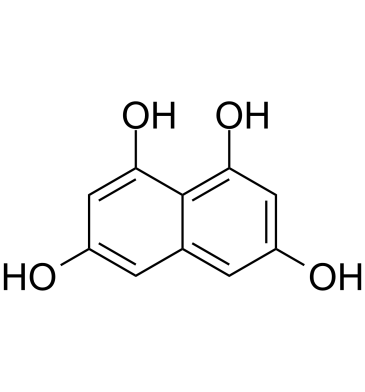
-
GC49220
1,3-Benzodioxole-5,6-diamine (hydrochloride)
A fluorescent derivatization reagent

-
GC66949
1,3-bis(carboxyethoxy)-2,2-bis(carboxyethoxy)propane
1,3-Bis(carboxyethoxy)-2,2-bis(carboxyethoxy)propan ist ein PEG-basierter PROTAC-Linker, der bei der Synthese von PROTACs verwendet werden kann.
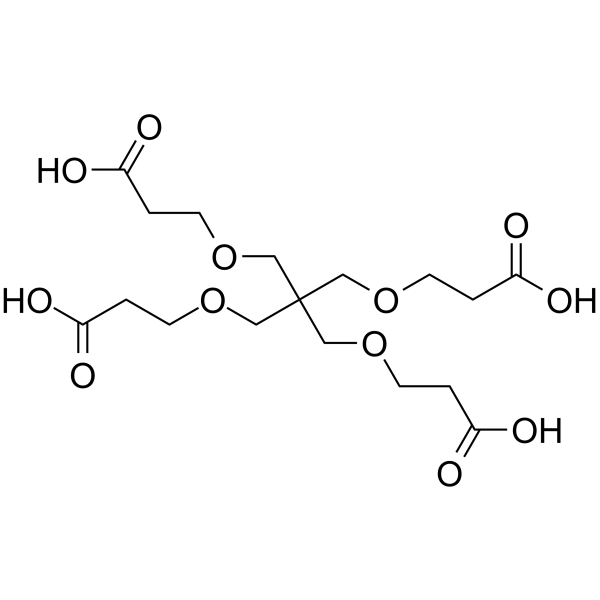
-
GC67054
1,3-Bis-aminooxy propane
1,3-Bis-aminooxypropan ist ein Alkylketten-basierter PROTAC-Linker, der bei der Synthese von PROTACs verwendet werden kann.
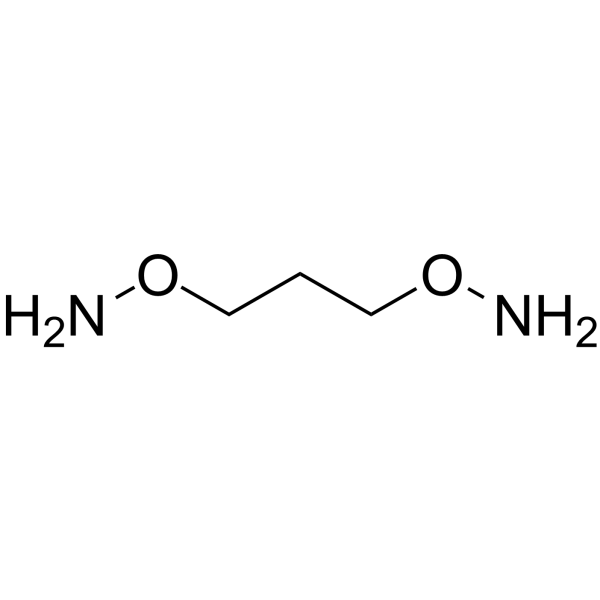
-
GC62352
1,3-Butanediol
1,3-Butandiol, ein Ethanoldimer, das eine Kalorienquelle fÜr die menschliche ErnÄhrung darstellt.
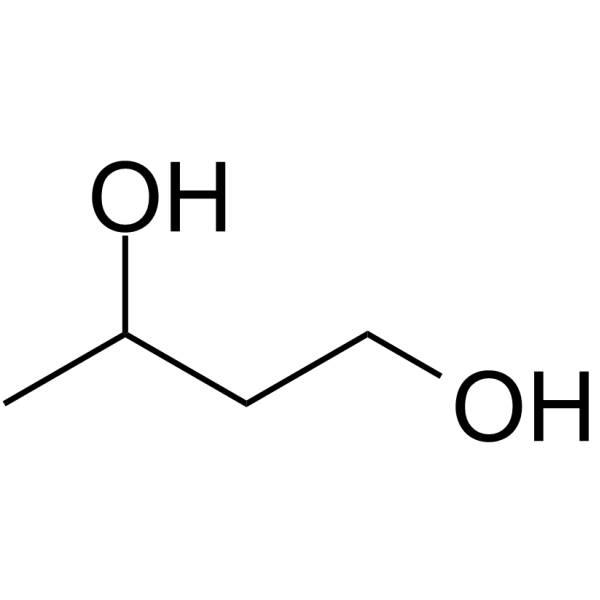
-
GC19661
1,3-Dihydroxyacetone
1,3-Dihydroxyaceton (DHA), der Hauptwirkstoff in sonnenlosen BrÄunungsprÄparaten und wichtiger VorlÄufer fÜr die Synthese verschiedener Feinchemikalien, wird im industriellen Maßstab durch mikrobielle Fermentation von Glycerin Über Gluconobacter oxydans hergestellt.

-
GC61827
1,3-Dimethylpyrazole
1,3-Dimethylpyrazol ist eine bioaktive Verbindung, die aus der Moso-Bambuswurzel isoliert wurde.
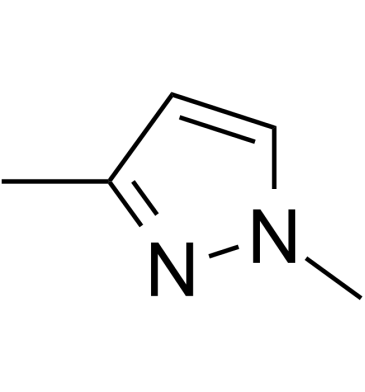
-
GC67985
1,3-Oxazolidine-2-thione
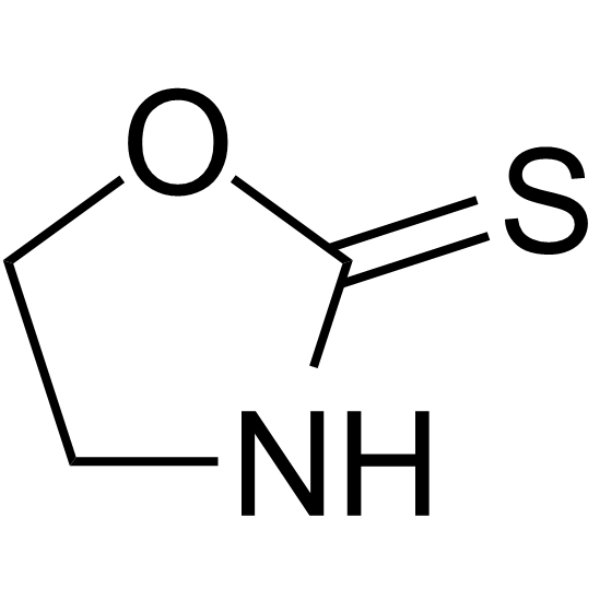
-
GC61709
1,3-Propanediol
1,3-Propandiol wird in der Natur durch die Fermentation von Glycerin in Mikroorganismen hergestellt.
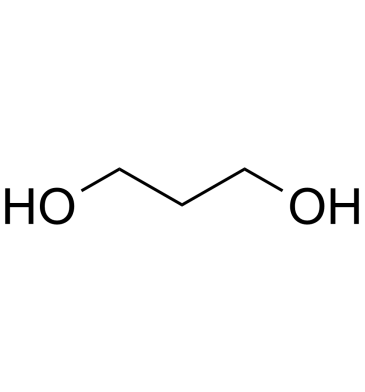
-
GC68134
1,3-Propanesultam
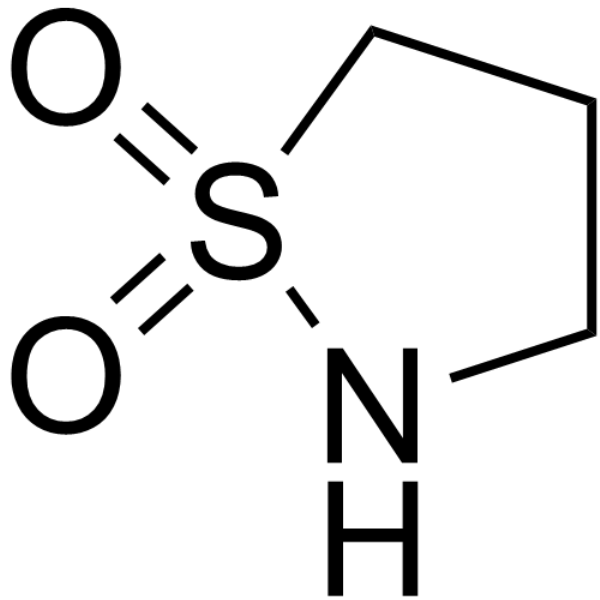
-
GC64247
1,4,7-Triazonane
1,4,7-Triazonan (1,4,7-Triazacyclononan), ein Zwischenprodukt bei der Synthese von 1,4,7-trifunktionalisierten Derivaten, ist ein mÖgliches Reagenz fÜr kompleximetrische Titrationen mit hoher KationenbindungsselektivitÄt[2 ].
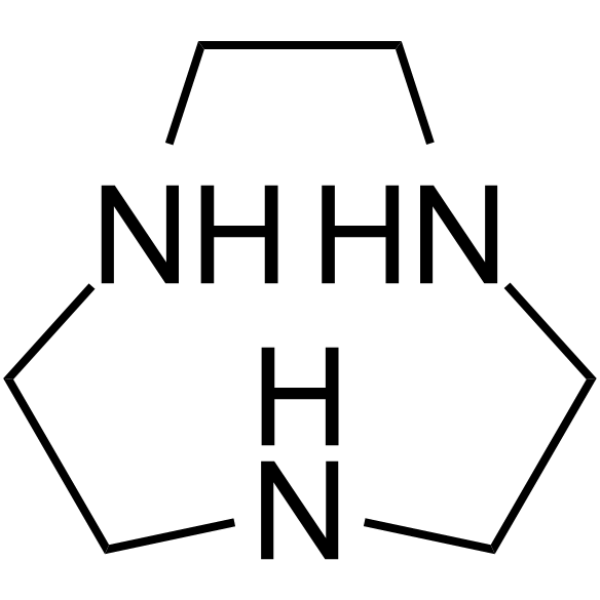
-
GC19528
1,4-Benzoquinone
A toxic metabolite of benzene
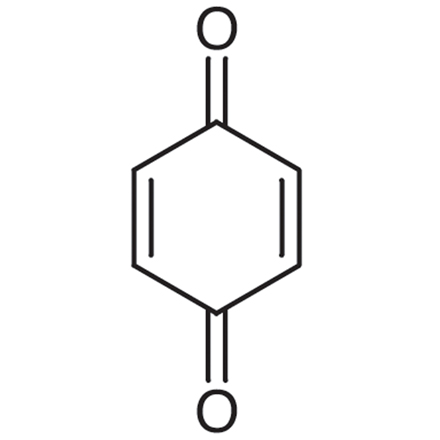
-
GC62755
1,4-D-Gulonolactone
1,4-D-Gulonolacton ist ein kÖrpereigener Metabolit.

-
GC68486
1,4-Diaminobutane-d8 dihydrochloride
1,4-Diaminobutan-d8 (Dihydrochlorid) ist das deuterierte Analogon von 1,4-Diaminobutan Dihydrochlorid. 1,4-Diaminobutan (Putrescin) Dihydrochlorid ist ein endogenes Stoffwechselprodukt und dient als Indikator für Verschmutzung durch Cr(III) oder Cr(VI)-Stress bei höheren Pflanzen wie Gerste und Raps.
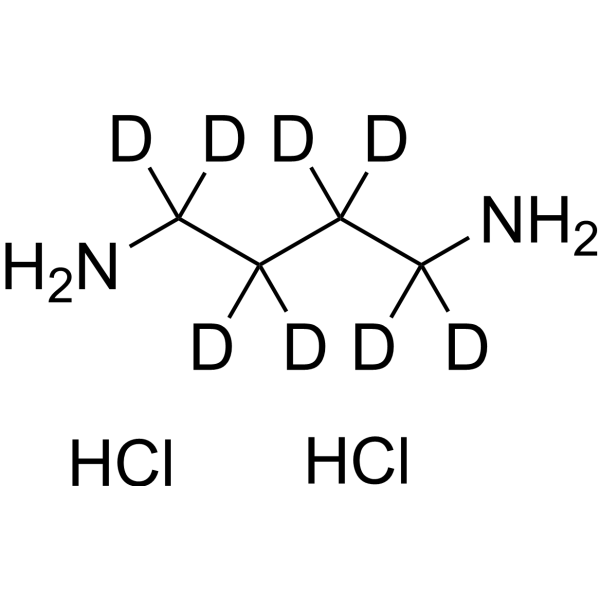
-
GC19683
1,4-Dichlorobenzene
1,4-Dichlorbenzol wird als Zwischenprodukt bei der Herstellung von Pigmenten, Pestiziden und Desinfektionsmitteln verwendet.

-
GC61949
1,4-DPCA ethyl ester
1,4-DPCA-Ethylester ist der Ethylester von 1,4-DPCA und kann Faktor-inhibierendes HIF (FIH) hemmen.
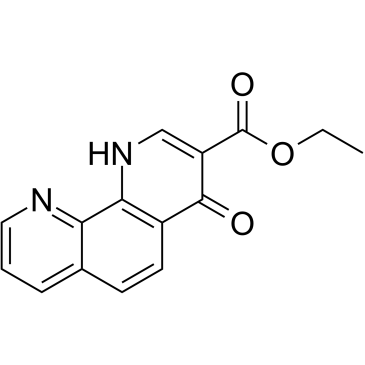
-
GC19717
1,6-anhydroglucose
1,6-Anhydroglucose (1,6-Anhydro-β-D-Glucopyranose) ist ein Anhydrozucker, der durch Glucan-Pyrolyse hergestellt wird und in der Natur weit verbreitet ist.
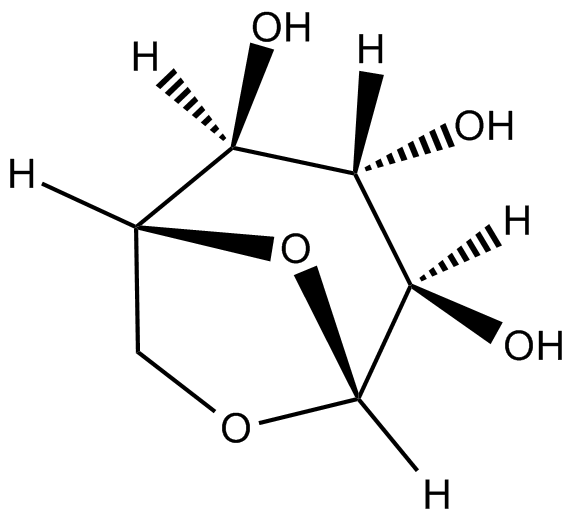
-
GC67200
1,6-Bis(mesyloxy)hexane
16-Bismesyloxyhexan ist ein spaltbarer ADC-Linker, der bei der Synthese von Antikörper-Wirkstoff-Konjugaten (ADCs) verwendet wird.
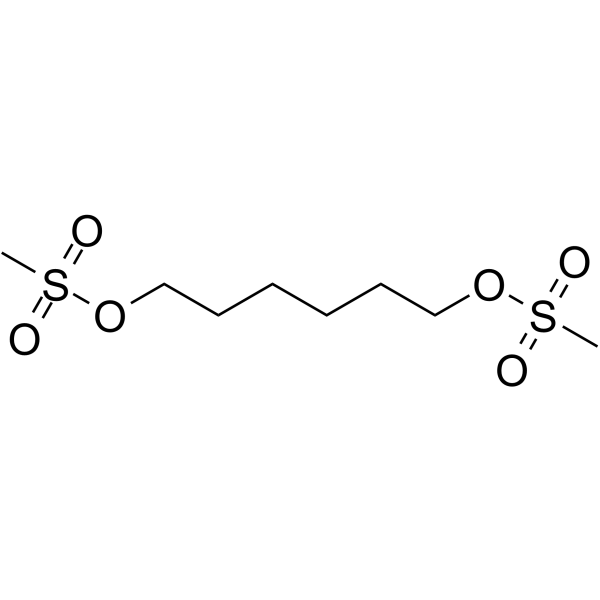
-
GC65551
1-(2'-O-4-C-Methylene-beta-D-ribofuranosyl)thymine
1-(&2#39;-O-4-C-Methylen-beta-D-ribofuranosyl)thymin ist ein bicyclisches Nucleosid.
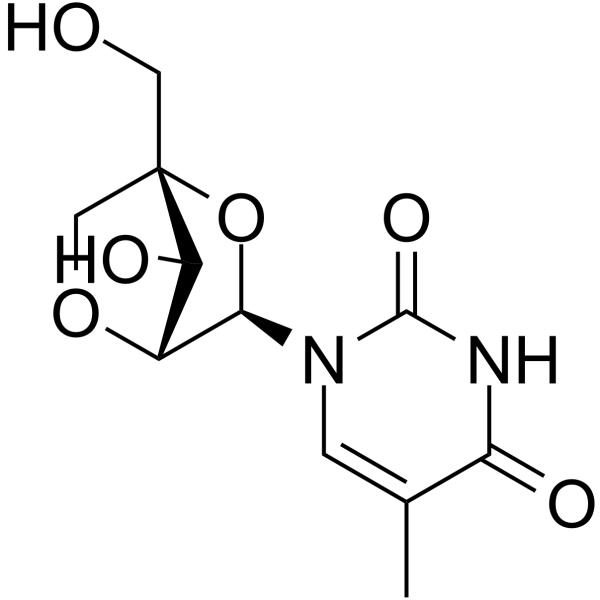
-
GC49537
1-(3,5-Di-tert-butyl-4-hydroxyphenyl)-1,2-ethanediol
A sterically hindered para-alkylphenol

-
GC49346
1-(3-Chlorophenyl)biguanide (hydrochloride)
A 5-HT3 receptor agonist

-
GC49294
1-(4-Chlorobenzhydryl)piperazine
An inactive metabolite of meclizine and chlorcyclizine

-
GC52356
1-1(Z)-Hexadecenyl-2-Arachidonoyl-sn-glycero-3-PC
A plasmalogen

-
GC64404
1-Aminopropan-2-ol
1-Aminopropan-2-ol ist ein mikrobieller Metabolismus des Aminoalkoholstoffwechsels Über Propionaldehyd und Acetaldehyd in einer Pseudomonas-Art .
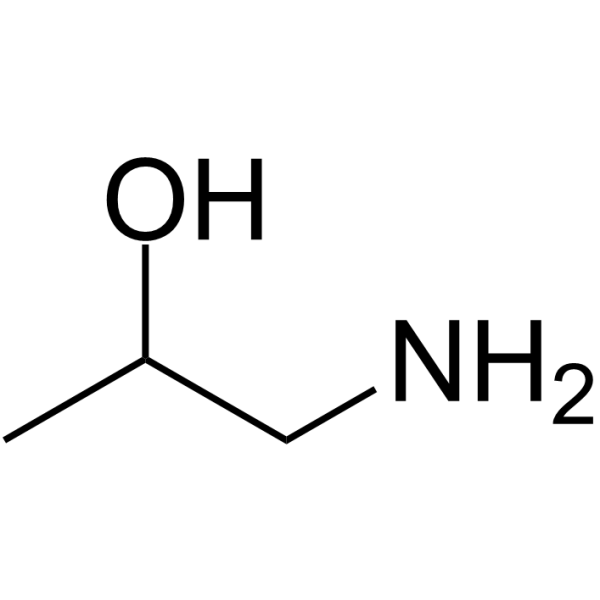
-
GC64176
1-Boc-azetidine-3-carboxylic acid
1-Boc-Azetidin-3-CarbonsÄure ist ein nicht spaltbarer ADC-Linker, der bei der Synthese von AntikÖrper-Wirkstoff-Konjugaten (ADCs) verwendet wird. 1-Boc-Azetidin-3-CarbonsÄure ist auch ein PROTAC-Linker auf Alkylkettenbasis, der bei der Synthese von PROTACs verwendet werden kannup
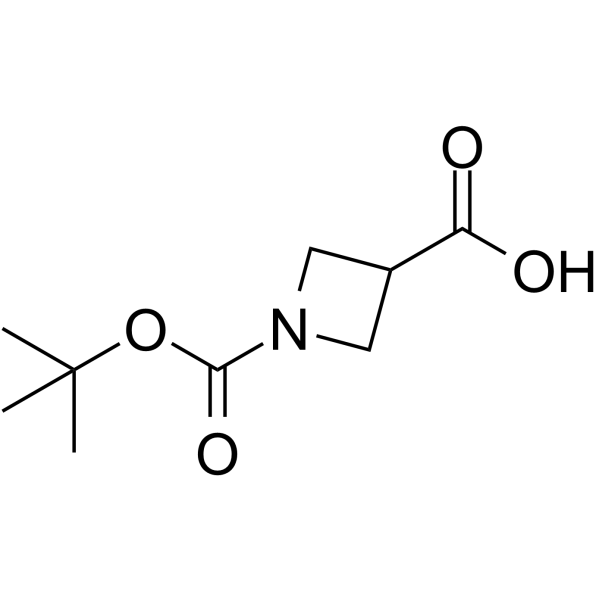
-
GC64159
1-Boc-azetidine-3-yl-methanol
1-Boc-Azetidin-3-yl-Methanol ist ein nicht spaltbarer ADC-Linker, der bei der Synthese von AntikÖrper-Wirkstoff-Konjugaten (ADCs) verwendet wird. 1-Boc-azetidin-3-yl-methanol ist auch ein PROTAC-Linker auf Alkylkettenbasis, der bei der Synthese von PROTACs verwendet werden kann
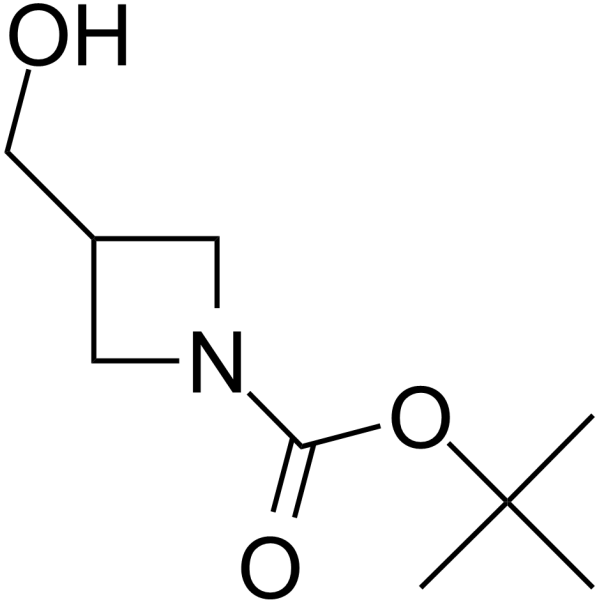
-
GC65223
1-Bromo-6-chlorohexane
1-Brom-6-chlorhexan ist ein PROTAC-Linker, der bei der Synthese von PROTACs verwendet werden kann.
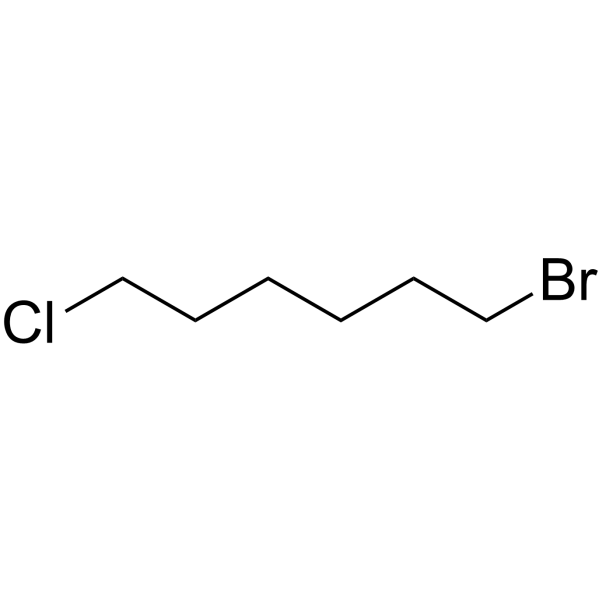
-
GC49861
1-Carboxycyclohexaneacetic Acid
A potential impurity in commercial preparations of gabapentin

-
GC64145
1-Cbz-3-Hydroxyazetidine
1-Cbz-3-Hydroxyazetidin ist ein nicht spaltbarer ADC-Linker, der bei der Synthese von AntikÖrper-Wirkstoff-Konjugaten (ADCs) verwendet wird. 1-Cbz-3-Hydroxyazetidin ist auch ein PROTAC-Linker auf Alkylkettenbasis, der bei der Synthese von PROTACs verwendet werden kann.
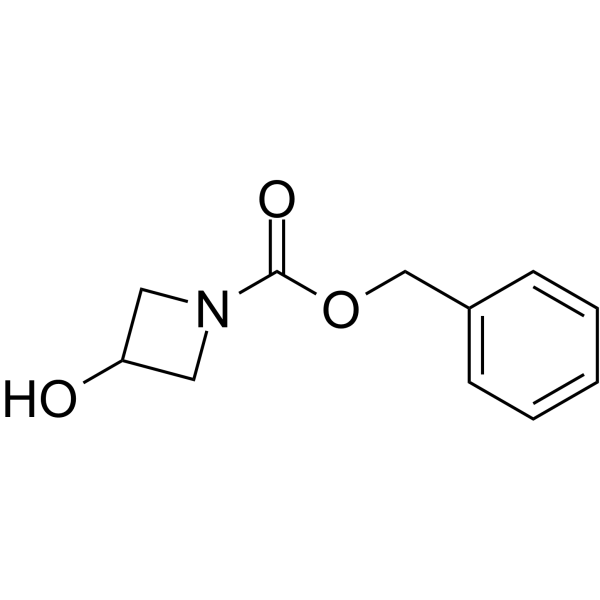
-
GC64047
1-Cbz-azetidine-3-carboxylic acid
1-Cbz-Azetidin-3-CarbonsÄure ist ein nicht spaltbarer ADC-Linker, der bei der Synthese von AntikÖrper-Wirkstoff-Konjugaten (ADCs) verwendet wird. 1-Cbz-Azetidin-3-CarbonsÄure ist auch ein PROTAC-Linker auf Alkylkettenbasis, der bei der Synthese von PROTACs verwendet werden kann
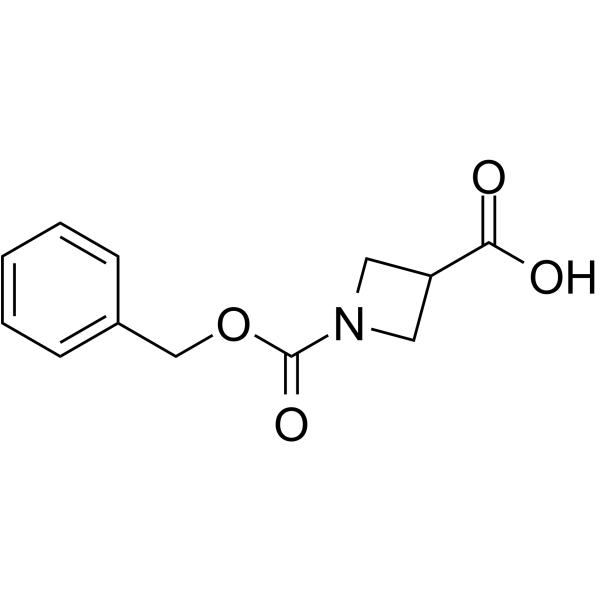
-
GN10317
1-Deoxynojirimycin
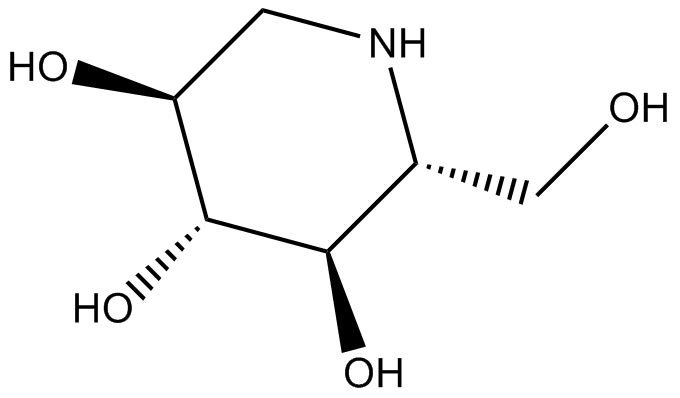
-
GC52186
1-Docosahexaenoyl-2-hydroxy-sn-glycero-3-PC

-
GC62760
1-Dodecylimidazole
1-Dodecylimidazol (N-Dodecylimidazol) ist ein lysosomotropes Detergens und ein zytotoxisches Mittel. 1-Dodecylimidazol verursacht Zelltod durch seine sÄureabhÄngige Akkumulation in Lysosomen, ZerstÖrung der lysosomalen Membran und Freisetzung von Cysteinproteasen in das Zytoplasma. 1-Dodecylimidazol hat eine hypocholesterinÄmische Wirkung und eine antimykotische Breitspektrum-Wirkung.
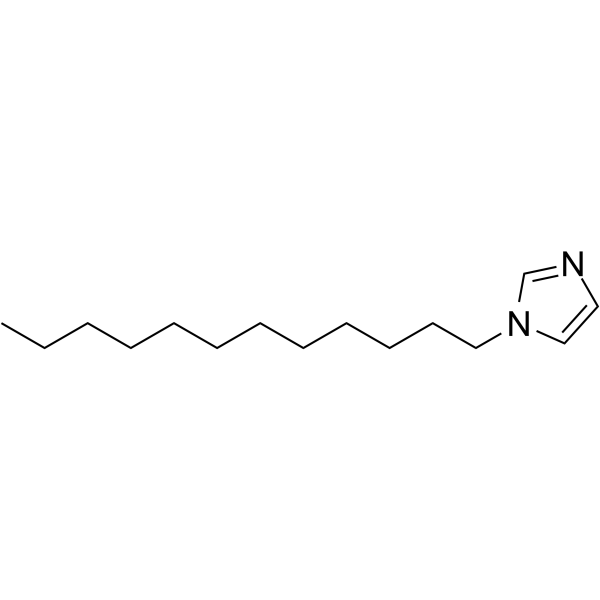
-
GC61690
1-Eicosanol
1-Eicosanol ist eine natÜrliche Verbindung mit antioxidativer AktivitÄt, die aus Hypericum carinatum isoliert wurde.
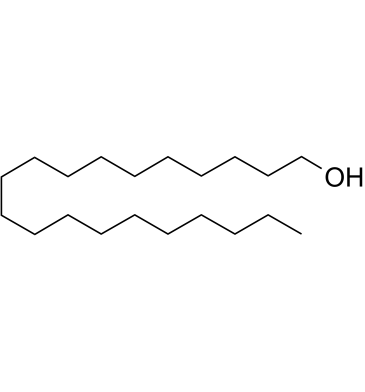
-
GC49470
1-Ethyl-1-nitrosourea (hydrate)
A DNA alkylating agent

-
GC67844
1-Fluoronaphthalene

-
GC62754
1-Furfurylpyrrole
1-Furfurylpyrrol wurde als potenzieller Geschmacks- und Aromaträger von Popcorn identifiziert.
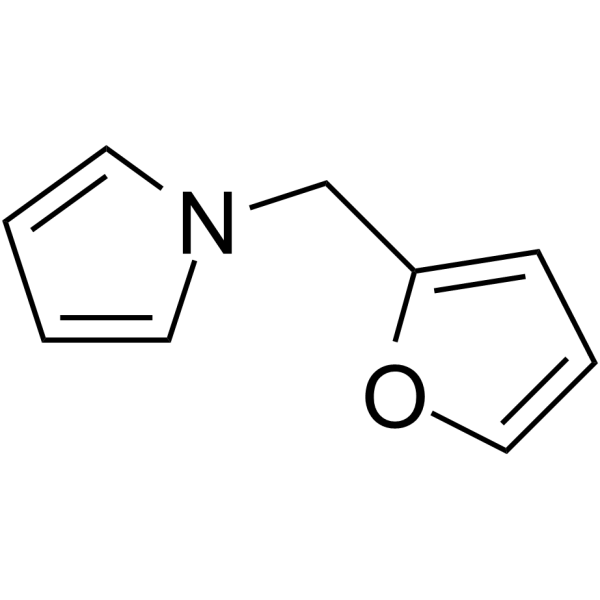
-
GC61642
1-Heptadecanol
1-Heptadecanol ist ein langkettiger primÄrer Alkohol mit antibakterieller Wirkung aus den BlÄttern von Solena amplexicaulis.
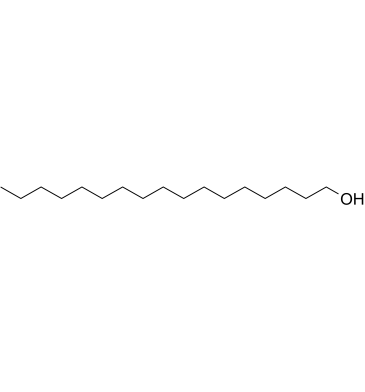
-
GC68495
1-Hexadecanol-d4
1-Hexadecanol-d4 ist das Deuterium-Isotop von 1-Hexadecanol. 1-Hexadecanol ist ein Fettalkohol und ein lipophiles Substrat.
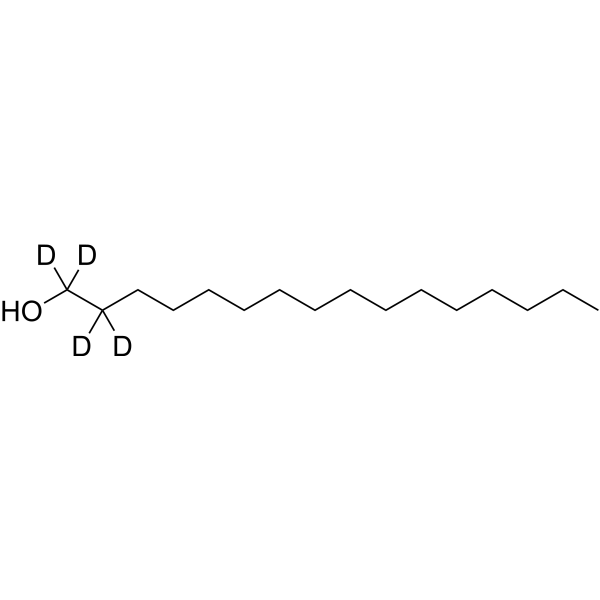
-
GC68496
1-Hexadecanol-d5
1-Hexadecanol-d5 ist das Deuterium-Isotop von 1-Hexadecanol. 1-Hexadecanol ist ein Fettalkohol und ein lipophiles Substrat.
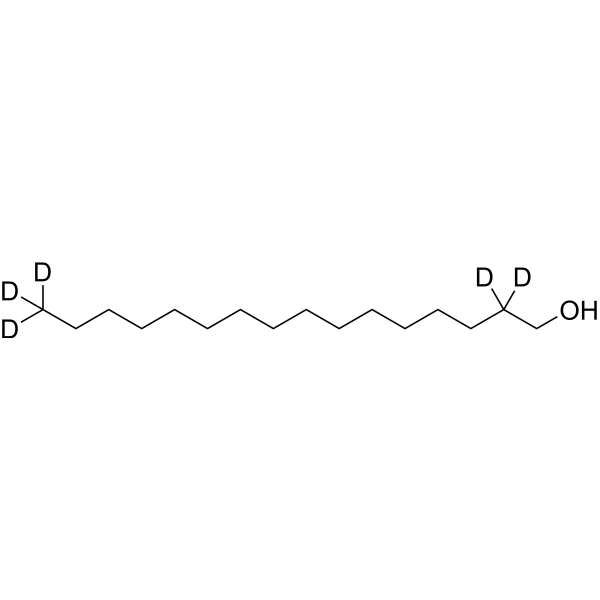
-
GC61723
1-Hexanol
1-Hexanol, ein primÄrer Alkohol, ist ein Tensid, das in industriellen Prozessen zur Verbesserung der GrenzflÄcheneigenschaften eingesetzt werden kann.
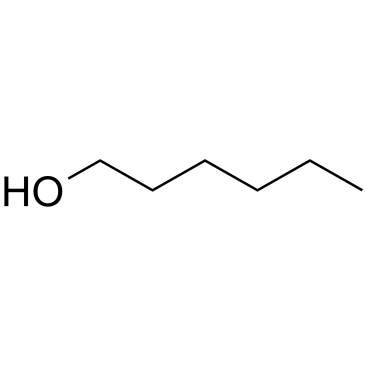
-
GC61643
1-Hydroxy-2-butanone
1-Hydroxy-2-butanon ist eine aus Bomboo Juice isolierte natÜrliche Verbindung mit antituberkulÖser AktivitÄt.
